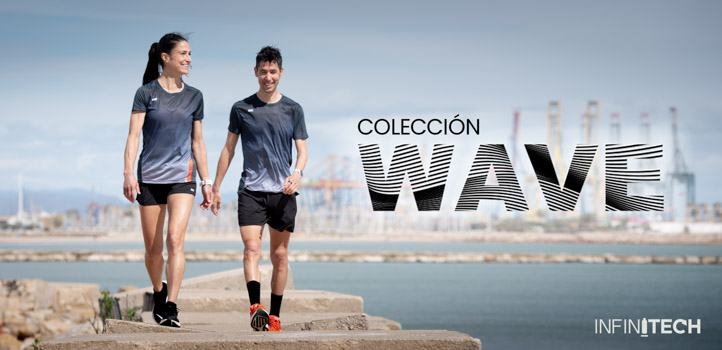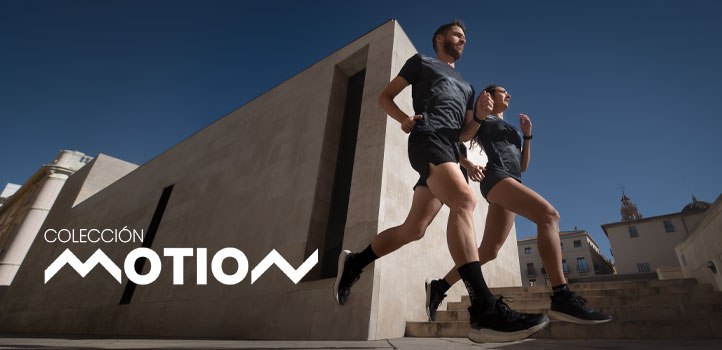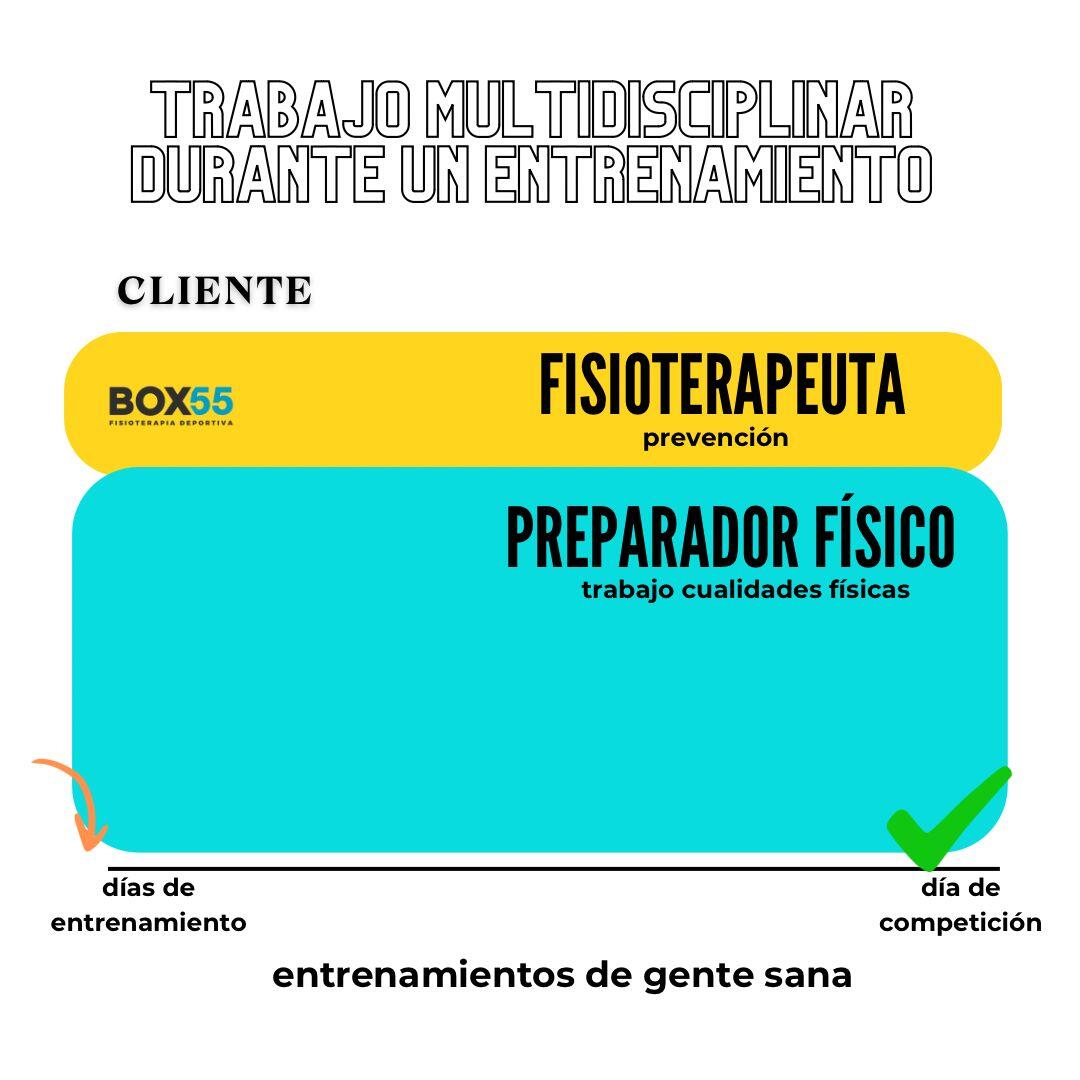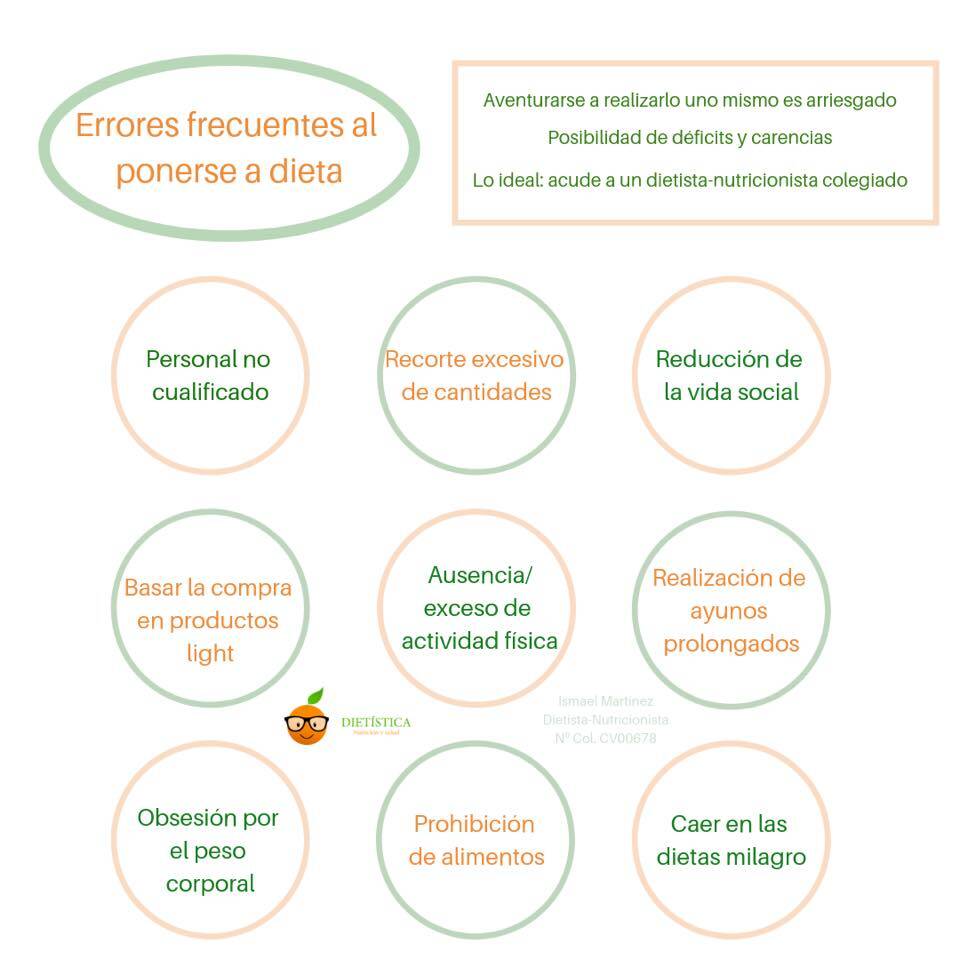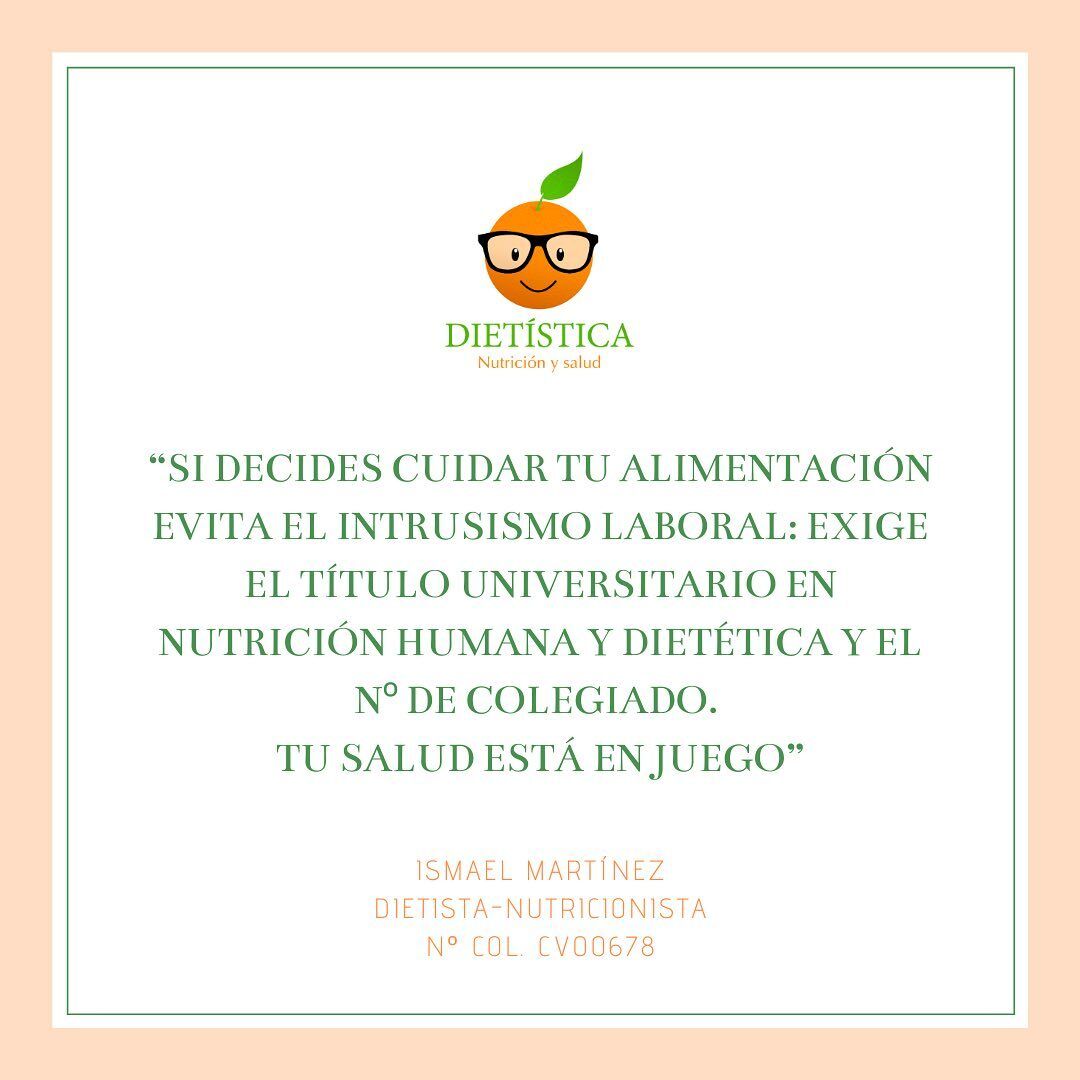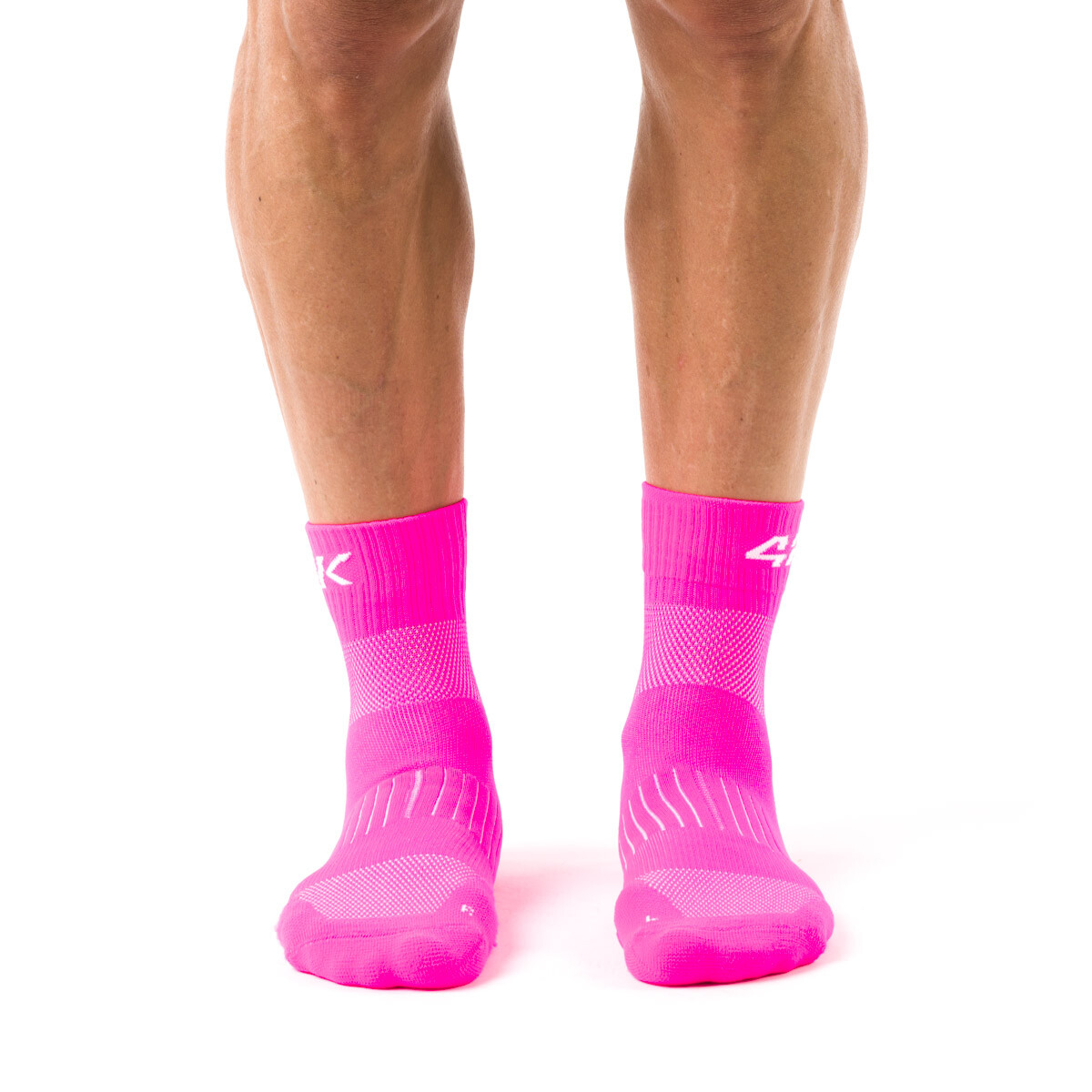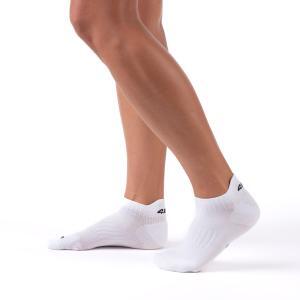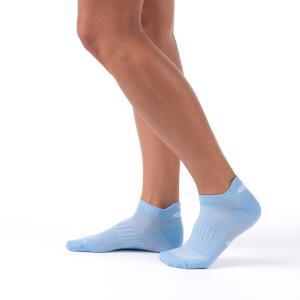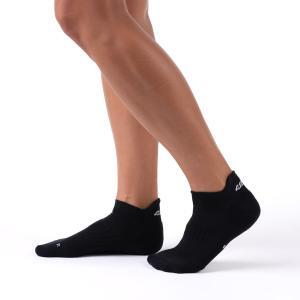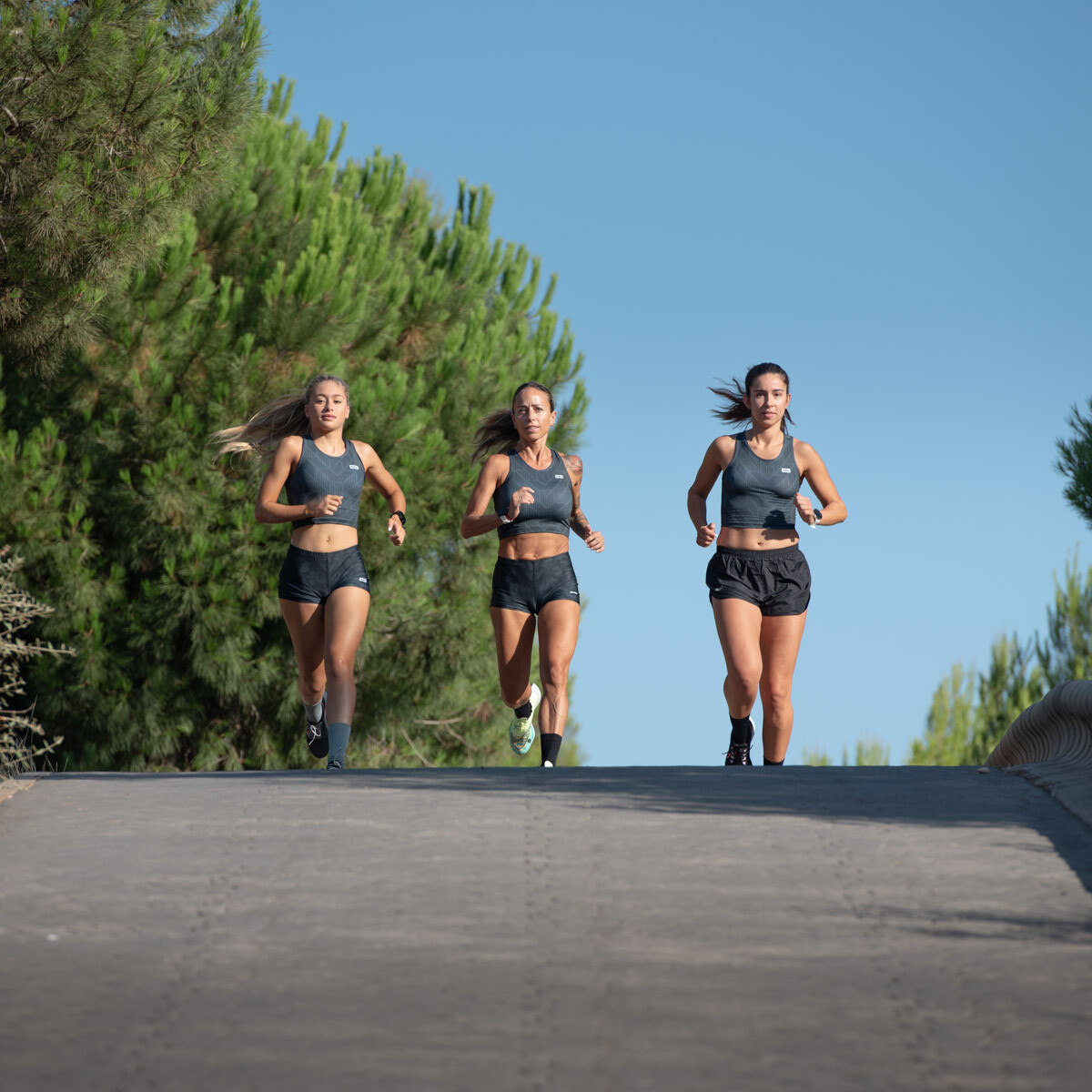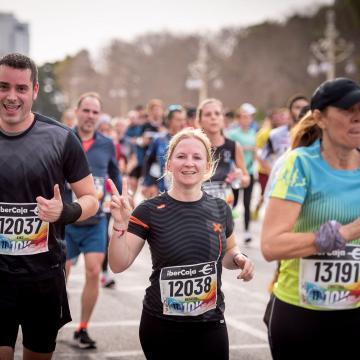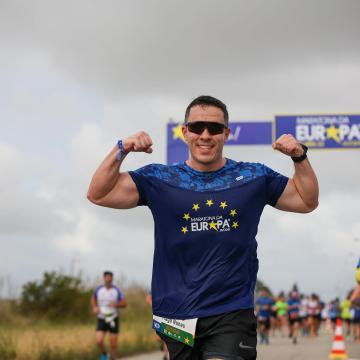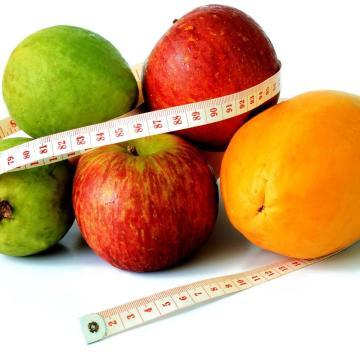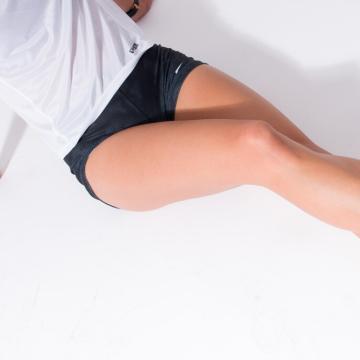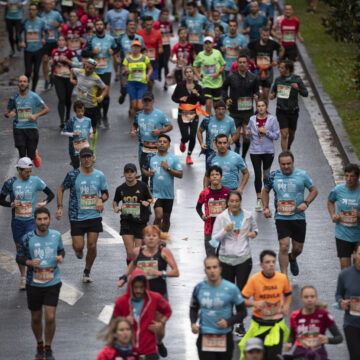Subscribe to our newsletter to find out about all the news and promotions, and automatically receive a welcome discount coupon in your email.
post -> La leyenda de Maratón
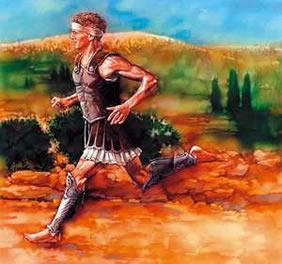
In the Greek city of Athens, women waited to find out if their husbands would win or lose the battle on the plain of Marathon (a place located approximately 42 km away) because their Persian enemies had sworn that after defeating the Greeks they would go to Athens to plunder. the city, rape the women and sacrifice the kids.
Knowing this, the Greeks decided that if the women of Athens did not receive the news of the Greek victory within 24 hours, coinciding with sunset, they would be the ones who would kill their children and then commit suicide. The Greeks won the battle, but it took them longer than expected, so they ran the risk that their women, by ignoring it, would execute the plan and kill the kids and commit suicide afterwards.
The Athenian general Miltiades the Younger decided to send a messenger to give the news to the Greek polis. And here history mixes with legend: Pheidippides, in addition to having been fighting for a whole day, had to travel a distance of between 30 and 35 km to deliver the news, since the city of Marathon is northwest of Athens, a distance away. not much distance. He took so much effort to reach his destination as soon as possible that, when he arrived, he fell exhausted and before dying he could only say one word: "Nike" (victory in Greek).
Another version is given by the historian Herodotus. According to him, Filípides was sent towards Sparta to request military assistance and to be able to repel the invasion of the Persians, who were advancing towards Marathon. According to Herodotus, Philipides ran from Athens to Sparta in two days, traveling 240 km. The founders of the IOC took the first version and set the distance of the race at 40 km, although there is an annual race in honor of this feat called Spartathlon (Spartathlon), which runs the distance from Athens to Sparta.[1] But there is no evidence that a competition similar to the modern marathon existed in the ancient world. [2]
Although many believe that only for this reason the marathon received its name, it is incorrect, since in general the Greek soldiers were excellent runners and in that battle the entire Athenian army had to run a great distance to reach the coast of its defenseless city before the Persian ships. When the Persians arrived they could not believe the incredible strength of these soldiers and they abandoned their attempts at conquest.
Best brands of all time:
Men
| Time | Athlete | Country | Date | Site |
|---|---|---|---|---|
| 2h03: 59 | Haile Gebrselassie | 28th September 2008 | Berlin | |
| 2h04: 27 | Duncan kibet | April 5th 2009 | Rotterdam | |
| 2h04: 27 | James Kwambay | April 5th 2009 | Rotterdam | |
| 2h04: 55 | Paul Tergat | 28th September 2003 | Berlin | |
| 2h04: 56 | Sammy korir | 28th September 2003 | Berlin | |
| 2h05: 04 | Abel kirui | April 5th 2009 | Rotterdam | |
| 2h05: 10 | Samuel Wanjiru | April 26th 2009 | London | |
| 2h05: 15 | Martin Lell | April 13th 2008 | London | |
| 2h05: 20 | Tsegaye kebede | April 26th 2009 | London | |
| 2h05: 27 | Jaouad gharib | April 26th 2009 | London |
| Trademarks | Athlete | Country | Date | Site |
|---|---|---|---|---|
| 2h15: 25 | Paula Radcliffe | 13/04/2003 | London | |
| 2h18: 47 | Catherine Ndereba | 07/10/2001 | Chicago | |
| 2h19: 12 | Mizuki Noguchi | 25/09/2005 | Berlin | |
| 2h19: 36 | Deena Castor | 23/04/2006 | London | |
| 2h19: 39 | Yingjie sun | 19/10/2003 | Pekin | |
| 2h19: 41 | Yoko shibui | 26/09/2004 | Berlin | |
| 2h19: 46 | Naoko takahashi | 30/09/2001 | Berlin | |
| 2h19: 51 | Chunxiu zhou | 12/03/2006 | Seoul | |
| 2h20: 42 | Berhane adere | 22/10/2006 | Chicago | |
| 2h20: 43 | Tegla Loroupe | 26/09/1999 | Berlin |
The 10k has become the popular test par excellence and for many people who are starting out in the running It is the first great competitive challenge in which to defend a number. In this article we are going to offer you tips to prepare for a 10k.
The 10k is a distance that more and more popular runners dare to do every day. The 'boom' of running In the last decade it has meant that many tests of this distance have been born and that almost all cities or towns of a certain entity have their ten thousand meter race.
In many 10k events (it also occurs in distances such as the 15k, the half marathon or the marathon) it is possible to find people who face the distance for the first time without adequate preparation to complete the test within the time allowed by the organization; The problem, however, is not arriving outside the time limit but rather subjecting the body to an effort for which it is not sufficiently prepared.
We have turned to the specialist Marcos Greus, high-performance trainer and coach in endurance sports, to ask for advice for someone who wants to prepare for a 10k (their first 10k) and do it in a sensible way and with the peace of mind of having the necessary preparation to face the challenge.
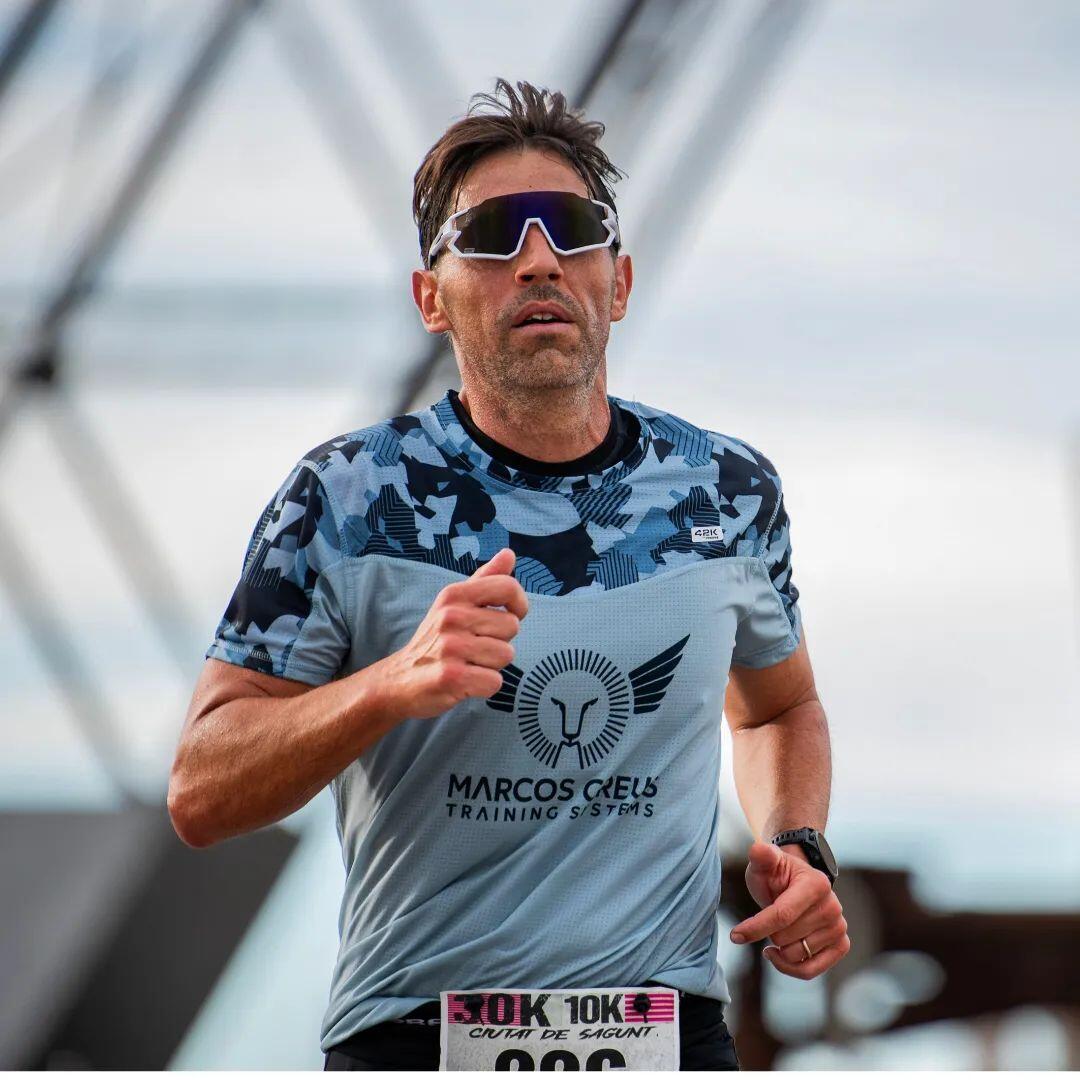
We have asked you a series of questions, taking as a starting point the situation of a popular runner who is already able to endure 30/40 minutes of continuous running, who goes out running 3 days a week and who is willing to increase your training time (plus time per shoot and adding a fourth day of training).
Preparing for a 10k requires being in shape
Preparing for a 10k is usually the first big sporting challenge for many people who get into running. runningIs it really a distance suitable for anyone?
Many people start running for health reasons, to feel well, to reach or maintain an adequate weight... As long as there is no medical contraindication, it is a good decision to start running, but running is a demanding physical activity that requires minimal preparation to avoid scares or problems; I always say that You have to be in shape to start running and not run to be in shape..
When you start running it is very important to be sure that you are in physical shape that guarantees that you are not at risk of injury.
It is more common than we think to find people who start running after a long time of total inactivity, who are overweight (with the risk that this can pose for the joints), without muscle tone and without having a prior medical check-up. And at the height of absurdity there are also cases of people who dare to run starting with popular races, which is a blunder and recklessness.
The boom of running that has been experienced in recent years has meant that many people sign up for races without adequate preparation and in some cases even without having barely run before. I have known cases of people who have signed up for races right away because they said that they found a stimulus to train and motivate themselves to run.
Prepare a 10k requires being in shape as a first requirement and, furthermore, committing to carrying out preparation work that is demanding because we are faced with a distance that seems very affordable (and really is with the right preparation) but that is not within everyone's reach because it involves running for around an hour uninterruptedly. ; It's one thing to run 20-25 minutes and quite another to run 60 minutes continuously..

How long is it advisable to have been running to consider running a 10k with guarantees of finishing it correctly and without problems or taking risks?
In general, my recommendation for anyone would be to face the challenge of preparing for a 10k when you are really sure that you can do it. run between 10 and 12 kilometers with solvency. What do I mean by “solvency”? Well, the cardiorespiratory system, the muscular system and the bone and ligamentous system are capable of supporting 10 kilometers at an easy pace; At that moment and not before is when you should think about tackling a 10k.
Many people go for their first 10k without having gone beyond 7 or 8 kilometers and, fortunately, nothing happens to the majority, but it is a distance in which there are risks that can cause discomfort or even injuries that could be avoided with a little more preparation, perseverance and, above all, patience. In recent years impatience has prevailed in the running popular; Fear and respect for distances have been lost, which is something that seems worrying to me.
When you can run 10 kilometers reliably at an easy pace, it is time to slightly increase the intensity and volume of training kilometers to face a 10k.
And why increase intensity and volume in training? Well, because in a race, inevitably, you will run at a faster pace than in training; When you put on your number it is normal to want to give your best and the body has to be prepared to run at a higher intensity.
Therefore, the sequence of steps to follow before facing the first 10k would be...
First step: Be able to run 10 kilometers with ease at an easy pace.
Second step: When you are already able to run 45-50 minutes three times a week with ease, it would be a good time to think about running a short race, 5 or 7 kilometers, to have a first contact with the competition before making your debut in 10k.
Third step: Increase the intensity and volume of kilometers to prepare the body for the highest intensity that we will demand of it on race day. How to increase the intensity? With short fartleks, such as 10 one-minute changes of pace with breaks (light jogging, without stopping) of 2 minutes. How to increase the volume? Running at a calm pace 12/13 kilometers.

10-12 weeks of specific preparation to prepare for a 10k
How long before the test would it be advisable to start training to adequately prepare for a 10k?
It depends on the starting state of each person; Starting to run from scratch is not the same for a sedentary person as it is for an active person who exercises or practices other sports regularly.
The starting state of each person will be decisive in establishing what type of training, how many days of training and what the appropriate planning should be to aspire to run a race safely and without risk of injury or health problems. .
At this point I want to claim the importance of a professional in Physical Activity and Sports Sciences being the one who determines what the optimal planning is and is also the one who guides the path of preparation; Only a physical preparation professional will be able to objectively determine what a person's starting physical state is and, therefore, what is the most appropriate preparation to face the challenge of preparing for a 10k.
In the case of an active person (not sedentary), who performs physical activity with some regularity and who does not have any physical limitations or medical contraindications, the normal period to prepare for a 10k would be 10-12 weeks of training running 3 times a week and doing at least one day of strength training.
What is essential from the point of view of a physical trainer before starting to prepare for a 10K?
Determine very well what the person's starting point of fitness is. Something very important for me is to make a anamnesis Sports, that is, an analysis of the medical history and personal and family history to be able to adjust the training loads as much as possible to the reality and circumstances of that person.
As I have pointed out before, starting to train a person who is coming from a period of inactivity (whether due to injury or disconnection from sport) or a sedentary lifestyle is not the same as starting to train someone who already does some sporting activity and who, therefore, already has muscle toning or adaptation to start with specific training focused on running.
It is essential to determine the starting point and carefully examine what is in the 'toolbox' of the person who wants to prepare a sporting goal.
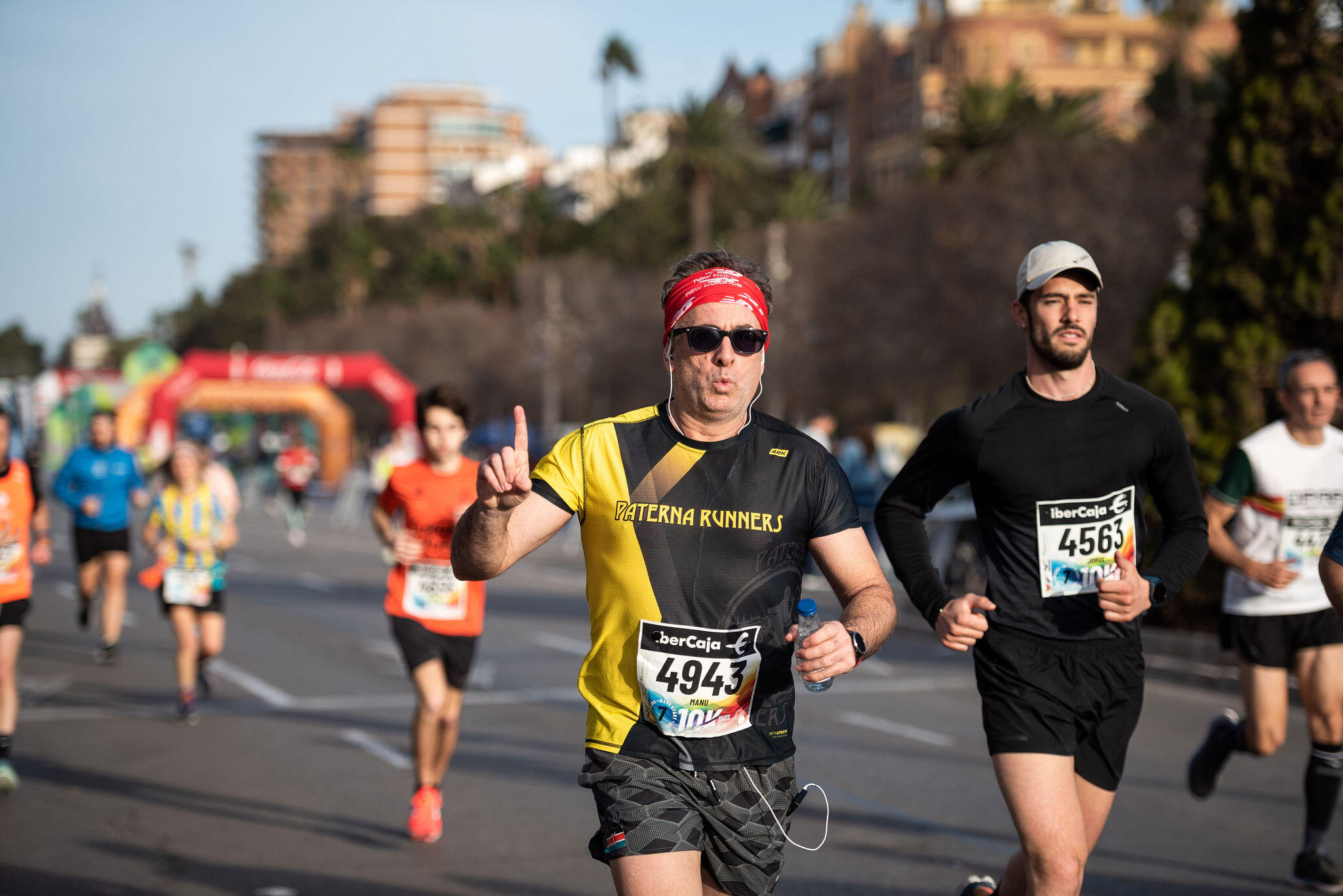
What do I mean by what's inside 'the toolbox'? I'm going to explain it with an example: person and a half on Saturday and Sunday; In person X's toolbox there is also the possibility of going to a gym for one or two days or doing a day of pool training...
With all that information, with everything I know is in person X's toolbox, I can design and build the most efficient training possible to address the sporting goal. That is why I say that for me the initial history of the person/athlete is essential to be able to properly adjust training days and workloads.
Yes, you have to train strength to prepare for a 10k
Is it important to incorporate strength training into preparation to debut in a 10K?
Absolutely yes. Strength is the basis of any physical preparation and it is important to prepare for a 10k. For someone who wants to face a 10k for the first time with the aim of finishing it with solvency but without pretensions of making a mark, specific work in the gym or with weights is not necessary, but a self loading work; This work could be with tires, TRX, on stairs, on slopes...
Strength work is necessary because it will allow train more, better assimilate training loads y reduce the risk of injury. And why do I say that it will allow you to train more? Well, because by doing strength work you can be more consistent in training and in the end the key in any endurance sport is perseverance and patience. The person who is constant, who does not skip or miss workouts, is the one who progresses.
In a 10k you take between 8.000 and 9.000 steps, which means supporting your body weight multiplied by 4 each time you step on the ground; If at the bone, muscle, tendon and ligament level you are not strong enough and prepared to withstand this enormous volume of impacts, discomfort and injuries may appear, and it will be of no use to wear very expensive shoes.
The most common mistake when debuting in a 10k: not keeping pace
What mistakes should you try to avoid when running a 10k for the first time?
The most common mistake of the beginner is usually getting carried away by the emotion of the race and not keeping track of the pace.
Act quickly. avoid going out at inappropriate paces because you end up paying for that after kilometer 7. You have to plan your pace from the start and run with a cool head at all times, but especially in the first kilometers.
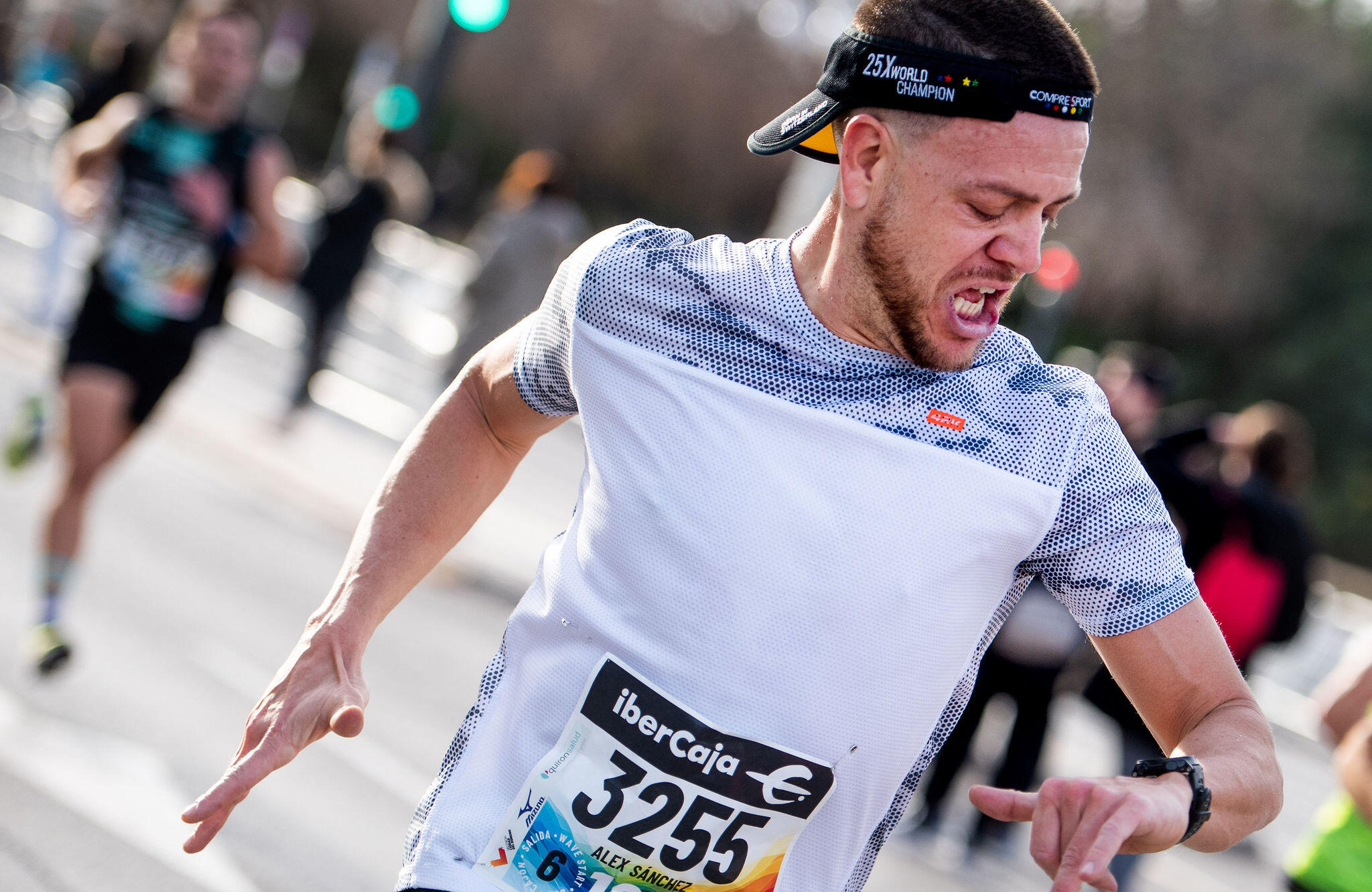
I always tell beginners in any distance, be it a 10k or a half marathon or a marathon, that you have to run at the rhythms or pulses that have been trained and assimilated. You should not overestimate yourself in the first kilometers no matter how good the sensations are; That feeling of believing that the bib number is going to give you that extra performance to run faster throughout the entire route is very treacherous.
Another indication that I always give to the runners I train is that the day before and the day of the race There is no need to do anything that has not been previously trained..
There is no need to do “experiments”. And on race day you don't have a different breakfast, you don't drink more coffee, you don't wear new clothes, much less shoes (which may sound like a joke, but I know of cases), you don't take an energy gel before the race because it's a recommendation from someone with a lot of experience, you don't drink something during the race that you haven't tried before...
On race day you don't have to do anything new; Everything that is done on race day has to be trained and assimilated prior to the race.
What would be important to be clear about before considering putting on a bib in a 10k?
The most important thing is to be clear that you want to run a race. There are many people who end up putting on a bib because of “pressure”. I know of cases of people who sign up because friends or family insist on doing so when they have been running for some time and they do it almost out of obligation.
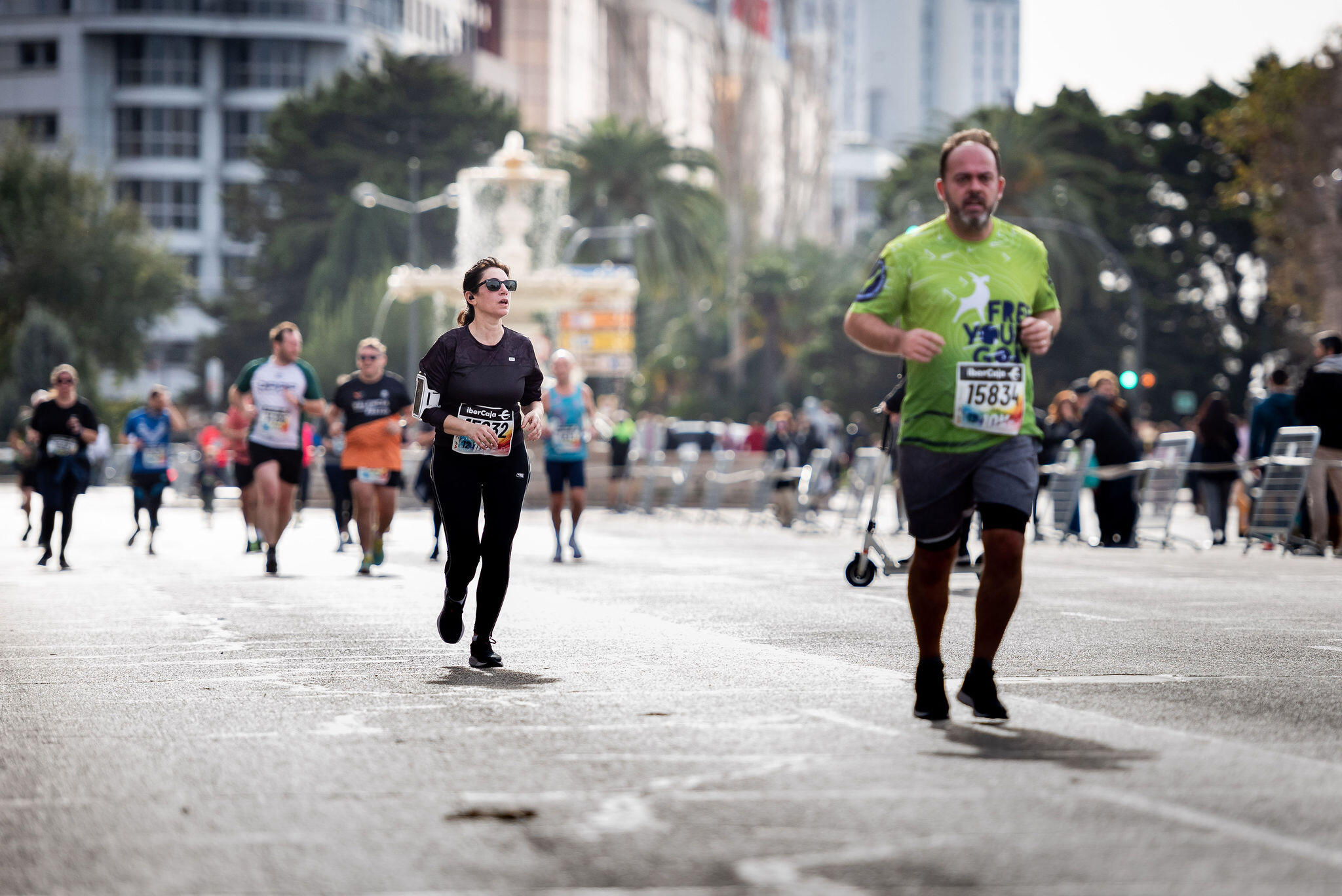
Facing a race, especially for the first time, generates stress that not everyone likes or enjoys. There are many people who like to run for health or for fun or to disconnect and who don't like to compete, and that's okay. Putting on a bib and facing a 10k is something you really have to look forward to. It is absolutely respectable that someone decides to run and has no interest in the competitive aspect.
Do you want to improve as a runner? Put yourself in the hands of professionals. To achieve sports goals, whether elite or popular, you must seek advice from someone who can really help you with judgment, seriousness and professionalism to improve as a runner in the section of training, preparation, nutrition, injury prevention and recovery... etc.
Internet and social reds have been a infinite amount of information available to anyone who is starting out in sports, information that can be very diverse: training, sports planning, nutrition advice, recommendations for injuries...
In many cases this information comes from serious sources, but has been provided in a generic manner, without taking into account the particular case of a specific person or patient. There is also information that comes from very unreliable sources and that should be ignored because in addition to not helping you improve as a runner, it can cause problems for you.
To improve as a runner you have to seek the right advice
We live in a time in which everyone has access to information at the click of a button and in which it is very fashionable to publish content on social reds about sports, nutrition, training... and, of course, physiotherapy.
Many professionals who have studied and achieved the corresponding degrees that accredit our knowledge and, therefore, the competence to offer quality services and advice to athletes, we witness with astonishment, disbelief, patience and, sometimes, indignation at the absurdity of finding, on a daily basis, on social reds people without qualifications or degrees pontificating on subjects about which they have little knowledge.
Some even profit from their advice, recommendations and advice based on knowledge that they do not prove (probably because they lack the required qualifications). Unfortunately, many of their clients are not aware of the risk they run by putting themselves in the hands of people who advise on training-preparation, injury recovery, nutrition or physiotherapy without training and without qualifications to prove their competence.
I am going to try to clarify which professionals can help you achieve your goals (and therefore improve as a runner) and which false professionals put your health at risk due to lack of preparation, lack of knowledge or desire for prominence.
In my opinion there are two basic rules to start dealing with this topic:
- Practicing a sport does not make you a professional specialist in it.. For example, no matter how good you are at playing soccer, you are not a coach; No matter how good you are at CrossFit, you are not a CrossFit coach; and, logically, no matter how good you are at running and no matter how good a time you have in the marathon or 10K, you are not a sports coach. running/athletics.
- The type articles… «7 definitive exercises to have iron legs» o «training to lose 50' in 10K» o "core training to be a better runner" that you find on the Internet or on social reds are not the ones that are going to be best for you (they may even harm you); They are articles written for other purposes (improve positioning, improve visibility, attract attention, gain followers...) but they are not really designed for you.
My advice is that you look for a true professional who is trained (and qualified, because that is a guarantee of having acquired knowledge), updated and, above all, who has experience in what you are looking for, be it training-preparation, nutrition or physiotherapy. If you really want to improve as a runner, don't put yourself in the hands of people

Without health there is no achievable goal
I frequently see people on social media offering information about physiotherapy or injury recovery (which is my professional specialty) without any criteria and, worst of all, without taking into account that giving inappropriate advice can lead to physical problems and even injuries. And injuries, I know from professional experience, destroy people's dreams and sporting aspirations. A phrase that I repeat ad nauseam with my patients and also when I teach classes is "without health there is no achievable goal".
With this article I intend to clarify the role of each of the professionals that you may encounter as a runner in your sporting activity (and to improve as a runner it is very important to be clear about this).
The first thing I want to make clear is that If you have an injury, you should go to a medical professional. to diagnose the injury; From there, I consider it very important to clarify the distribution of roles between physiotherapist, physical trainer and coach:
- Un physiotherapist trabaja so you can train.
- Un physical trainer trabaja so you can compete.
- Un coach trabaja so you can perform.
Are you a patient or client? An important difference
A very important aspect to keep in mind is to know if you are a patient or a client, what difference does it make? Well, very simple: if you are injured or need to prevent injuries In order to train, the professional you should turn to is a physiotherapist, because you are a patient. If you are healthy, you are a client and what you need is a degree in Physical Activity and Sports Sciences.
If you are a patient, you need a physiotherapist
The physiotherapist is the professional who is in charge of improving the injured structure while respecting the tissue healing process; In addition, it works on the sports rehabilitation of the injury or preventing it, based on physiotherapy tests that help ensure that you can train without pain or discomfort to give quality to the training of sports professionals, who are the physical trainers of yesteryear and who Now they are graduates in Physical Activity and Sports Sciences.
A physiotherapist accompanies the athlete when he is injured; and when he is not injured, the physiotherapist can help him prevent with exercises evaluated through functional physiotherapy tests, for example with the Valobando App (you can learn more about what it consists of in the article «The importance of the sports physiotherapist»), generating specific work for the athlete with a health objective, since they are health professionals.
A physiotherapist can make a physiotherapy diagnosis, which, together with a previous medical diagnosis, serves to design recovery work and also serves to avoid relapses.
If you are not injured, you are a 'client' and need a degree in Physical Activity and Sports Sciences
The graduate in Physical Education or currently the Degree in Physical Activity and Sports Sciences is the professional who is in charge of preparing the runner who is healthy (not injured) to compete. If you are not injured, you are not a patient, but a client with a competition goal in mind.
The graduate in Physical Activity and Sports Sciences is the professional who is in charge of, once your physical qualities have been evaluated, preparing you so that you can compete to the maximum and improve as a runner; he is in charge «to look for your best version», which is an expression that is very fashionable now. To improve as a runner, it is essential to have the advice of an expert in physical preparation to be able to get the best out of your physical qualities.
Furthermore, a graduate in Physical Activity and Sports Sciences who is specialized in high performance in endurance sports is the one who can best guide you in planning training to achieve a specific goal.
Now, can a physical trainer readapt an injury? And a second question: can you train a patient with an injury?
The answer to the first question is a resounding NO because it has not been trained for it; Doing so would be a clear example of work intrusion, in addition to putting the 'patient's' health at risk, because a runner who requires rehabilitation due to an injury is a patient and not a client (which is why I previously made the distinction between patient and client).
The answer to the second question is more complicated, but I will try to clarify it: a patient (a runner with an injury) must be supervised by a physiotherapist in the stretcher and readaptation phase to the sport, but is not exempt from working on the physical qualities that your sport requires and that is the part in which the Physical Activity and Sports Sciences technician intervenes, but always under the supervision and tutelage of a physiotherapist.

The physiotherapist and the degree in Physical Activity and Sports Sciences go hand in hand in the training and recovery process of an athlete. It is a professional tandem that can really help anyone interested in that goal improve as a runner.
Once the runner has recovered from the injury, the person in charge of directing the training process is the graduate in Physical Activity and Sports Sciences, but the physiotherapist is obliged to generate the correct situation to that the athlete does not get injured and can train to the maximum with his coach.
At this point I would like to talk about other professional profiles (for some of them it would be more appropriate to talk about 'pseudo professionals'), especially because in recent years they have proliferated on social reds giving all kinds of advice to runners (preparation, nutrition, training, injury prevention, injury treatment, health advice...) and, honestly, I think that many of them cannot help you improve as a runner.
- Massage therapist. Person who has studied a course on how to give massages, but cannot treat pathologies because they have a very poor knowledge of anatomy. You have ‘customers’; You can go to it simply to release muscle tension, but not if you have an injury or pathology.
- Chiropractor. The chiropractic It is based on practices and beliefs that are considered pseudoscience. They are dangerous because with little training in anatomy they manipulate vertebral joints and that can pose risks to people's health.
- Monitor. There are two kinds:
- Room Monitor or Personal Trainer. Normally it is a Higher Technician in Physical and Sports Activities (TAFAD), a Vocational Training qualification that is included within the branch of Sports; They train for two years, but logically they do not have the knowledge of a degree in Physical Activity and Sports Sciences. It is a hybrid between the professional who wants to get the most out of you and get you in shape. There are also 3-month courses, it is a course with little training and low quality.
- Monitor of disciplines such as Pilates, yoga, boxing, swimming, paddle tennis, tennis, etc., they are professionals in activities specialized in a method or sport.
- Druid, shaman, brujo, neighbor with powers, friend who reads hands… They are people who help spiritually and really only help those who believe in superstitions.
- Acupuncturist. Person who inserts needles to perform acupuncture treatments; Not to be confused with physiotherapists or doctors trained in traditional Chinese medicine.
- Expert in nothing and everything. This is a dangerous profile: his sporting experience is all his knowledge and he believes that this qualifies him to coach others. Unfortunately, I have had several examples in my clinic of runners injured by following the advice of that friend. "who has been running for many years and has won several popular races", which is why he considers that he can serve as a coach for anyone.
- Youtuber, content creator, influencer… This is a profile that has grown on social reds and that, in my opinion, has every right in the world to generate content as long as it does not delve into professional fields that have to do with health, and for me health It is nutrition, training, physical preparation, injury recovery, physiotherapy...
In conclusion, I believe that health must be taken very seriously. In general, most true professionals are respectful of their areas of action. Specialization is essential to provide health guarantees to athletes. A physiotherapist cannot delve into the terrain, for example, of a podiatrist, in the same way that a traumatologist cannot act as a nutritionist or a physical trainer cannot determine how recovery from an injury should be done.
Many popular runners make the decision to start a supposedly healthy diet on their own and, generally, they tend to make different mistakes.
Starting to take care of yourself to improve your quality of life and even to have a healthier appearance (body) is very good and should be applauded. But experience has shown me that most people who start a healthy diet on their own they end up making different mistakes because they lack the necessary training to know the what, how and when of a healthy diet.
Some of the mistakes that are often made when starting a healthy diet without the supervision or advice of a nutrition professional can be harmful to health and end up interfering with the achievement of the objective of improving the general state of health and even not achieving the desired change in physical appearance.
10 common mistakes when eating a healthy diet without professional advice
Nowadays social reds are full of 'nutritional influencers', 'nutritional coaches' or 'nutritional therapists'; These people, many of whom lack the necessary qualifications, earn money by generating content on nutrition, among which there are many recommendations/tips/advice on healthy diets (some dare to go even further by talking about "miracle diets"). which can be dangerous to health because they can cause serious nutritional imbalances.
The only health professional authorized to carry out dietary plans is the dietitian-nutritionist.
Based on my experience in consultation, I am going to list the main mistakes that are usually committed by people who decide to start a healthy diet (or what these people consider to be a healthy diet) without the advice, supervision of a dietitian-nutritionist.
These would be the 10 most common mistakes that are committed when starting a supposed or supposed healthy diet that has not been planned by a nutrition professional:
- Reduce intake.
- Reduce social life.
- Buy only atlimelight type lenses.
- Excess physical activity.
- Absence of physical activity.
- Carrying out prolonged fasts.
- Obsession with weight.
- Removelimentos by false myths.
- Falling into “miracle diets.”
- Do not resort to a nutrition professional.
A healthy diet is not eating less or eating only 'light'
Reduce intake
It is clear that the quantities will probably have to be cut a bit, but The problem is not 'how much' but 'what'. I'm going to give an example: a donut is small, but its caloric value is very high and the nutrients it provides are not healthy. However, a salad is a larger amount of food but with low caloric value and a wide variety of nutrients. Therefore, a suitable option to start a healthy diet.
Decrease social life
"I'm not going to dinner with my friends because I'm on a diet.". Mistake! In one tolimeBalanced ntation there is room for whims, of course.
If you have to spend 4 months losing weight and you are not going to try chocolate in that period of time, you will probably abandon your goal and not achieve the expected results. One has to enable 2-3 free intakes per week “for mental health”, for example, going out to dinner with your partner on Friday, family dinner on Sunday and lunch with co-workers, of course, without abuse and compensating for it with good nutritional behavior the rest of the week.
buy fromlimelight type nts
Focus your shopping list on takinglimeReal ingredients, natural and quality ingredients. To follow a healthy diet you have to know how to choose foods in the supermarket.limeadequate foods and for this it is highly recommended to know how to read labels or nutritional information; If you have questions, you can consult the article that also appears in this blog about labeling to make an appropriate purchase. Example: light mayonnaise is still unhealthy, but a natural tomato and basil sauce is magnificent.
It could be said, therefore, that a healthy diet begins with the purchase we make. at the supermarket.
Healthy diet and well-planned exercise
Excess physical activity
“I'm going to run for a long time, super fast and when it's hottest” o “I'm going to go to the gym 2 times a day”. If you are cutting out food and training like an elite athlete, I'll probably give you a 'bird'.
Furthermore there is also the phenomenon of overtraining, which in extreme cases can be chronic. Start with short walks and gradually gain shape to gradually increase the hardness of your sessions. Ask the gym monitor for help and he will guide you little by little. Don't start the house on the roof!

Lack of physical activity
The opposite is also the case, doing nothing and entrusting everything to the diet. At first it works, but you will stagnate before or after. The trick is not to reduce and reduce the kilocalories we consume, but to increase our caloric expenditure with physical activity.
Additionally, with diet alone you will probably lose muscle mass. The key to success: add diet and exercise.
Performing long fasts
This dangerous fashion, so to speak, is not not at all recommended in what we would understand as a healthy diet.
Carrying out prolonged fasts triggers the hormone cortisol and represents a protein depletion which leads to a loss of muscle mass and body fat. Furthermore, when we eat again we will be very hungry so it is likely that we will overeat which will activate the excessive secretion of the hormone insulin, which it will create fatty tissue.
Weight obsession
What the scale says is not the most important thing. Sometimes weighing the same is not a problem because you can lose 2kg of fat and have gained 2kg of muscle mass because you have started training. At that moment you will overwhelm, but your body composition is much better. Look in a mirror and check your clothes, you will see that your volume is much smaller!
In addition, weighing yourself daily is a mistake, because it is possible to appreciate that in one or several days you do not go down anything and even go up ... do not panic! You may have to go to the bathroom, that you have weighed at different times, that you are in the menstrual period (in the case of women) and many other factors that influence body weight.
Removeliments for false myths
"I follow a healthy diet and I don't eat bananas because I've been told it makes you fat"; "water in food is very bad" o "bread, pasta and rice outside, carbohydrates are very bad"… These are phrases that are frequently heard (there are many more of these popular statements circulating out there among popular runners when talking about a healthy diet). There are many false myths in relation to thelimentation and let alone when it comes to talking about a healthy diet.
There is nothing wrong with, for example, some oil and salt toast for breakfast; There is also no problem in having a banana for lunch or eating a plate of rice with chicken and vegetables. Please, Don't believe everything you read on social media!
There are too many false myths in relation to what a healthy diet should be and, for some time now, it is very worrying to observe that many of these false myths are spread uncontrollably.
Be very careful with miracle diets because they are the opposite of a healthy diet
Falling for miracle diets
«I have stagnated in weight so I am going to do the artichoke diet» o "I'm going to live on juices and smoothies for a month": They may seem like unrealistic atrocities, but they are crazy things that some people do who believe in the miraculous effects of some diets (which is why they are called 'miracle diets'). These diet They promise great weight loss quickly and effortlessly, something that some of these diets can fulfill but paying a very high cost for health.
Miracle diets They are an error due to excess restriction, so there will be important shortcomings, but above all because the lost weight is usually regained. Why is this happening? Because they don't teach you how to eat well; There is no nutritional education, so when you are at your weight you won't know what to do to maintain it.
Remember: any miracle diet is just the opposite of a healthy diet.
Not turning to a nutrition professional
Generally, all the patients who come to my office have already decided to start a healthy diet for themselves, or they either fail to achieve their goals or they quickly stagnate. The only health professional authorized to carry out dietary plans is the dietitian-nutritionist, as stated in art 7 section g of the Law 44/2003, of November 21, on the organization of health professions:
g) Dietitians-nutritionists: University Diplomas in Human Nutrition and Dietetics develop activities aimed atlimentation of the person or groups of people, appropriate to their physiological and, where appropriate, pathological needs, and in accordance with the principles of prevention and public health.
The alimentation is a very important aspect of health, so a bad onelimentation (a bad diet) can put health at risk, so it is essential to entrust these matters to the appropriate healthcare professional. I would like to finish by leaving a question for any runner to answer: when you suffer a muscle problem while running, do you go to the pharmacist to get the solution? If you suffer from a muscle pull, do you ask a dietitian-nutritionist to give you a massage? It's weird, right?
Indeed, when you have a muscle problem you go to the physiotherapist, who has studied how to solve or treat these problems in the correct and appropriate way for your health. Well, when it comes to following a healthy diet you should put yourself in the hands of a dietician-nutritionist and not trainers, pharmacists, traumatologists or physiotherapists.
Gastrointestinal problems are one of the main risks (and fears) that runners face in background tests like the marathon, trail races running long distance or ultra-resistance tests (6H, 12H and 24H).
The appearance of gastrointestinal problems dDuring a competition it can spoil all the chances of achieving the desired sporting goal. Most runners have experienced the difficulties and annoyances representing running with gastrointestinal problems, especially when this happens in tests lasting several hours (as is the case of the marathon, racing mountaineering, triathlon events, duathlons, etc.) in which the intake of alimentos, supplements, liquids, etc. to maintain sporting performance and avoid the dreaded “birds" as the hyponatremia.
Between 30% and 50% of runners suffer gastrointestinal problems in long distance events
Alimenting and hydrating correctly is necessary, essential to be exact, in races of a certain duration, but it is of great importance to do it correctly to avoid the appearance of gastrointestinal problems, which tend to be, as already indicated, very common.
Studies show that between 30% and 50% of the participants in long distance tests suffer from gastrointestinal disorders or problems. Fortunately, the majority manage to complete the course with more or less success, but it is also true that sometimes gastrointestinal problems can force abandonment because they trigger more serious consequences and put the athlete's health at risk.

We present below some of the most common symptoms gastrointestinal problems What runners can suffer during a long-distance event (and I am sure that the vast majority of runners have suffered some of these gastrointestinal problems at some point):
- Refluxes/burning.
- Eruptions.
- Distension/swelling.
- Stomachache.
- Nausea/vomiting.
- Intestinal cramps.
- Stabs.
- Flatulence.
- Gases.
- Urgency in defecation.
- Diarrhea
- Intestinal bleeding.
Running for hours with any of the gastrointestinal problems listed can be, at best, uncomfortable, although the discomfort can turn into major complications (lack of strength, dizziness, anxiety, abdominal pain, cramps...) and even lead to make the aspiration of crossing the finish line extremely difficult.

Main risk factors for gastrointestinal problems
Some of the gastrointestinal problems mentioned can be prevented. There are a series of factors that increase the risk of suffering from these disorders. Listed below are the main risk factors to suffer from these disorders in long-distance runners.
- Age. The appearance of gastrointestinal problems is more common in young athletes.
- Sex. The appearance of gastrointestinal problems is more common in of (especially during the menstrual period).
- Training level. The appearance of gastrointestinal problems is greater in athletes during their period of initiation to the competition.
- Pre-event intake. To avoid the appearance of gastrointestinal problems, it is recommended avoid fat and fiber. Consume carbohydrates (not whole grains) and protein. (This point will depend on the tolerance of each individual).
- Caffeine. It may be important for performance, but it is necessary control doses pre-competition and during the test, or even divide them into 2 shots.
- Dehydration. It usually occurs in the final part of races and is related to the appearance of gastrointestinal problems. Replace fluids and minerals It is essential during the race to avoid the dreaded dehydration that can destroy all hopes of reaching the finish line.
- Consumption of gels, bars, rehydration drinks,limein, etc. Must be test exhaustively in training individual tolerance of each and every product that will be consumed on the day of the race. On the day of the race you cannot do experiments: all thelimeThe liquids and solids consumed must have been previously tested in training to know how the body tolerates them.

Recommendations to avoid gastrointestinal problems
The following recommendations are of a general nature and may vary according to each athlete, type of sport, duration and intensity of the event, weather ... But they are a factor to take into account to prevent gastrointestinal problems:
- Always try the strategieslimentation and hydration in training and never on the same day of the race. If the sporting goal is a marathon, my recommendation is to try the strategy oflimentation and hydration in training and if the result is satisfactory, then try it in a test prior to the marathon that we have as our objective. Once we have ensured that it does not cause us any harm either in training or in competition, we can carry out the strategy in the objective test without fear of the appearance of gastrointestinal problems.
- Carbohydrate intake. ingest 60-70g of carbohydrates (HC) for each hour of competition. This amount can reach 90g HC / h according to the tolerance of the individual. In running races, the intake of 40-60g HC / h is recommended.
- Hydration. ingest 500-700ml of liquid per hour.
- Sodium intake. Take between 250-350mg sodium per hour. Replacement gels, capsules or drinks are some of the possible ways to consume it.
- Caffeine. Consume between half an hour and one hour before the start of the test. 2-3 mg of caffeine per kg of body weight (For example a 70kg runner will consume 140-210mg of caffeine in the test). If the race lasts more than 8-9 hours, this amount can be repeated every 3-4 hours.
- Consumption of supplements. Bars, gels, replacement drinks, etc. They are a great way to obtain carbohydrates, liquid, caffeine and minerals due to their easy consumption, digestion and absorption. Note: supplements in gel format should be taken with water to facilitate swallowing and dilute the concentration of sugars.
What happens when you go over kilometers in preparation for an important race? Well, you have a good chance of suffering iliotibial band injury or, as it is more commonly known, Runner's knee o runner's belt.
'Runner's knee' or iliotibial band syndrome
I remember that in 2015 I received a phone call on a Wednesday, four days before the Valencia marathon. From the other side of the phone line they told me: “Hello David, I am a friend of Jacob and he told me that you can take away my 'runner's knee' problem for this Sunday when I run the Valencia marathon and I want to make a personal record.”. My answer was the following: “Making a personal best will depend a lot on whether or not you can run on Sunday”.
I immediately called him in for a consultation and found that he had accumulated excessive training, very demanding in terms of mileage; Furthermore, I discovered that he had an excessively valgus knee, with an excessively valgus ankle and a timing incorrect muscle that activated the tensor fasciae latae and contractured it to the point of not being able to run.
I told him that I was going to patch his 'runner's knee' problem to try to enable him to compete on Sunday, although I warned him that I couldn't guarantee that he would be able to finish the race. I decided to do the following treatment:
- Dry needling and electropuncture of the tensor fascia latae.
- A functional knee bandage that will align your knee upon impact.
- An ankle bandage that would prevent excessive valgus generated by the activation of the tensor fascia lata.

I asked him to try running 10 kilometers the next day, Thursday (3 days before the competition) and I told him that if everything went well after that training, he could hope to start the marathon and contemplate the possibility of completing the 42,195 kilometers despite his 'runner's knee' problem.
The next day he went out to train and ended up doing 18 kilometers (and not 10, as I had told him) “because I felt good”. “Will I be able to finish the marathon with this?”, he asked me after confessing that he had done 18 kilometers; my answer was "let's try", without more.
Obviously, he did not know (and I did not tell him) that with each impact the bandages on his knee and ankle would lose effectiveness and that little by little he would have pain again; My hope was that he would be able to get to kilometer 25 without any problem and that from there he would be able to endure the increasing pain that he was going to suffer.
This real situation that I have told (and that has happened to me on more occasions throughout my professional career) is something that sports physios sometimes have to face. And in a situation like this you have to make the decision to do palliative physiotherapy, that is, you have to do whatever it takes so that the athlete can compete, leaving aside the therapeutic physiotherapy that would provide a solution to his problem.
But what is the 'runner's knee' or runner's band?
El runner's knee syndrome o iliotibial band syndrome is a frequent injury in runners with too intense preparations and with accumulation of too many kilometers in their legs.
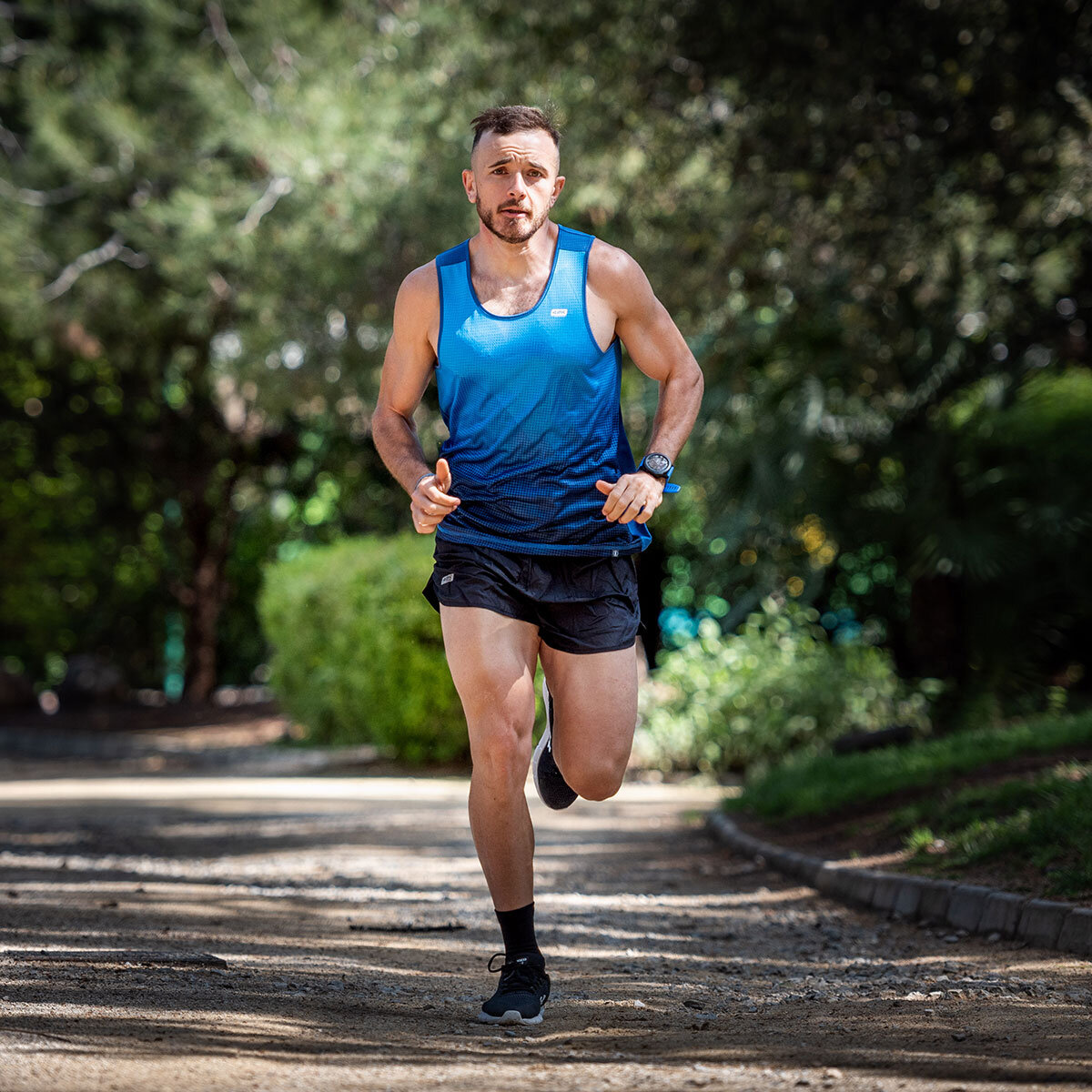
It is an injury that begins with pain on the outside of the knee and it increases progressively, becoming very intense when long runs or training with too many impacts are performed. It's a pain that starts soft and that is increasing until you reach a painful burning sensation that ends up forcing you to stop because the sensation of pain becomes unbearable.
The muscle affected and behind the problem known as 'runner's knee' is the tensor muscle fascia lata; is about a hip muscle with a long tendon that inserts into the knee on its external surface. When the pain begins, it is normal to confuse it with a knee problem, but the problem is really in the hip tensor muscle.
A runner who has a lack of adductor muscles and limitations in the abductor muscles will generate an overload that will cause pain in the knee. This means that if you have more strength in the external part than in the internal part (adduction is what closes the leg and abduction is what opens it), having more strength in the abductor part (the one that opens) will to generate pain in the knee, but really the problem is in the hip.
What should be taken into account when evaluating runner's knee syndrome?
- Weakness in the hip abductor muscles due to overload.
- Runner with poor alignment of the entry of the foot on the ground generating a valgus or varus of the knee, this will cause overstretching or weakness in the tensor fascia latae.
- A runner's short leg will generate a weight shift that will produce more load on one knee; In order not to touch the ground, the athlete has a tendency to run by abducting.
- Excess valgus in the ankles due to loss of strength in the tibialis posterior will force the runner to elevate the foot, generating a poor flight in the stride, forcing the tensor fascia lata to elevate the leg.
- Multidisciplinary work between physiotherapist, physical trainer and podiatrist to generate good biomechanics in the patient.
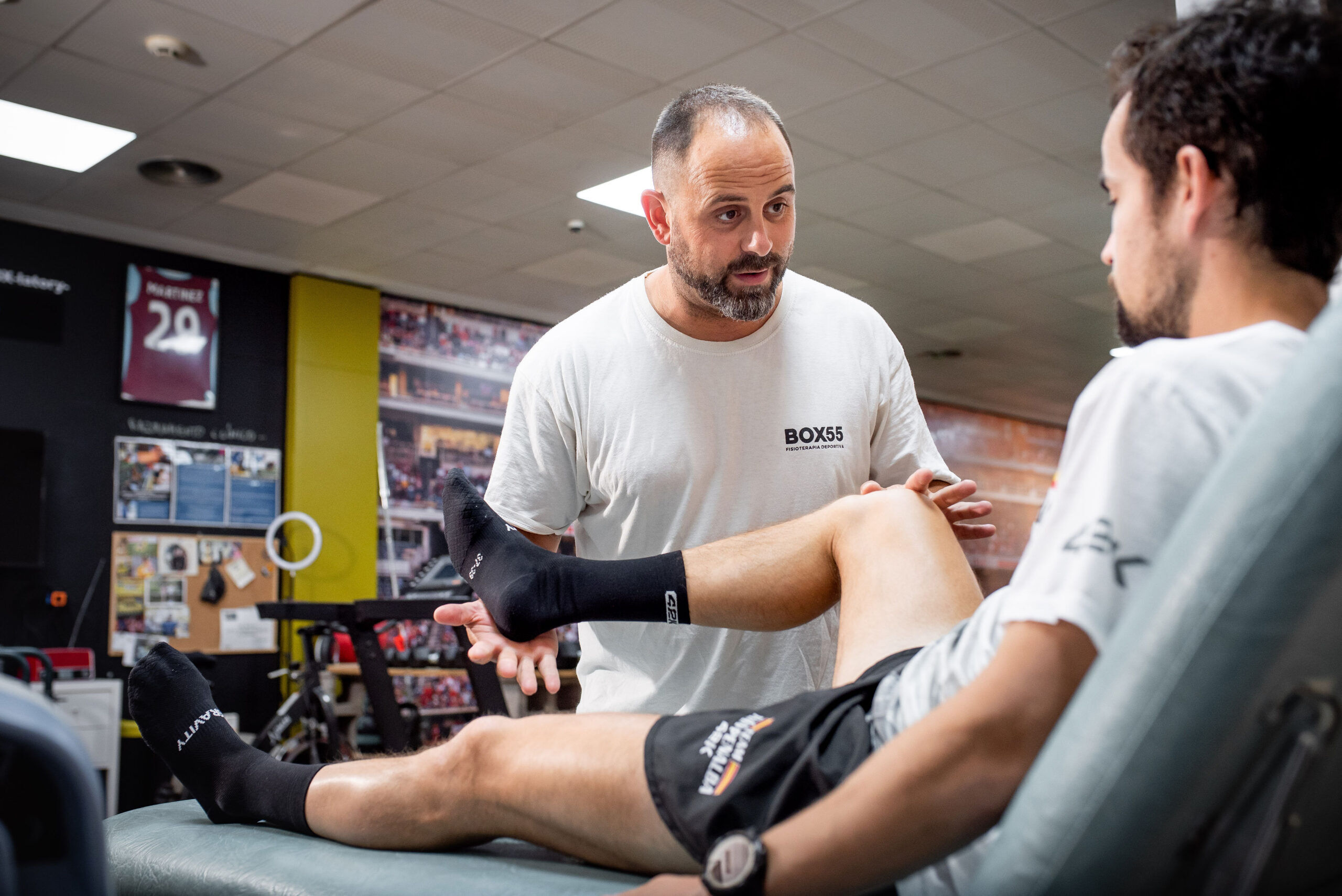
What should you do if you suffer from 'runner's knee'?
- First of all, we must keep in mind that we do work the muscles without control foot posture (foot captor) we will not be able to treat the injury.
- Secondly, we must remember that 'runner's knee' is actually a hip problem so we must improve hip mobility and strength.
- Thirdly, we must control all the strength work of the intrinsic muscles of the foot to improve the adaptation of the knee to the ground.
- Fourthly, we will be forced to do training with fewer kilometers.
- It is advisable to help during rest periods with water training and cycling sessions
- Go to the physiotherapist once a week to improve muscle timming and remove muscle tone.
Going back to the patient from the beginning, he was able to finish the race and even lowered his time from the previous year. When he returned to the clinic on Monday after the marathon, I noticed that his instep was burned and then I asked him what had happened to him and how had he been able to lower his mark?
He told me that at kilometer 15 he had an accident at a refreshment station: «As I approached the aid station I inadvertently stepped on a banana peel, slipped and slipped under the aid station table, knocking all the glasses of water over me. The entire ankle bandage became soaked with water and began to rub after a few kilometers, causing me such pain that I completely forgot about the pain in my knee. In the end, I pushed and ended up sprinting.", he explained smiling to me with his 2nd degree burn on his instep.
Moral: never stop chasing your dreams. In the competition any detail is valid to achieve the objectives. Sport is not healthy, competition is not healthy, but the sports physiotherapist is there to understand you, support you and with a little luck “heal” you.
Today, this patient continues to run marathons with insoles, with less training load and less accumulation of kilometers, with optimal hip activation, with his knee and foot perfectly aligned to be able to enjoy the sport he loves.
Congratulations to all the runners who, against all odds, have the courage to stand at the starting line to try to achieve their sporting challenges; The sports physios will always accompany you.
More articles by David Valenzuela, sports physiotherapist at Box55
Sports physiotherapist David Valenzuela is one of the regular contributors to the blog. 42K. Many long-distance and trail runners pass through his office. running, track, etc., so you know perfectly well what are the main injuries that exist in the world of running, as is the case with the tibial periostitis, Plantar fasciitis, patellar tendinopathy and achilleus tendinopathy, low back pain, hamstring tear or ankle sprain.
42K has renewed its entire socks catalog running with 3 new collections in three different measures: 22 cms, 14 cms y ankle braces.
Three new collections of technical socks from running and multisport to satisfy all tastes of cane heights: Ingravity2 (22 cm), Etna2 (14cms) y Low Run (ankles).
Socks running with three shaft heights
The socks catalog running 42K has grown with the incorporation of three new collections different in terms of style and shaft height, but with a common denominator: excellent technical quality at an unbeatable price.
All socks 42K They are designed and developed to meet the expectations of the most demanding runners. Like all products 42K They have been tested in different terrains, distances (races and/or training from 1 hour to 5 hours) and circumstances (different intensities and rhythms; in heat and cold...) by runners of 42K to verify that its performance is optimal.
Ingravity2, socks running high cane
The Ingravity2 It is designed for those runners who are looking for socks. running de tall cane with minimalist design discreet colors. They have 22 centimeters of shaft height and offer maximum comfort for running, triathlon, cycling or Nordic walking.
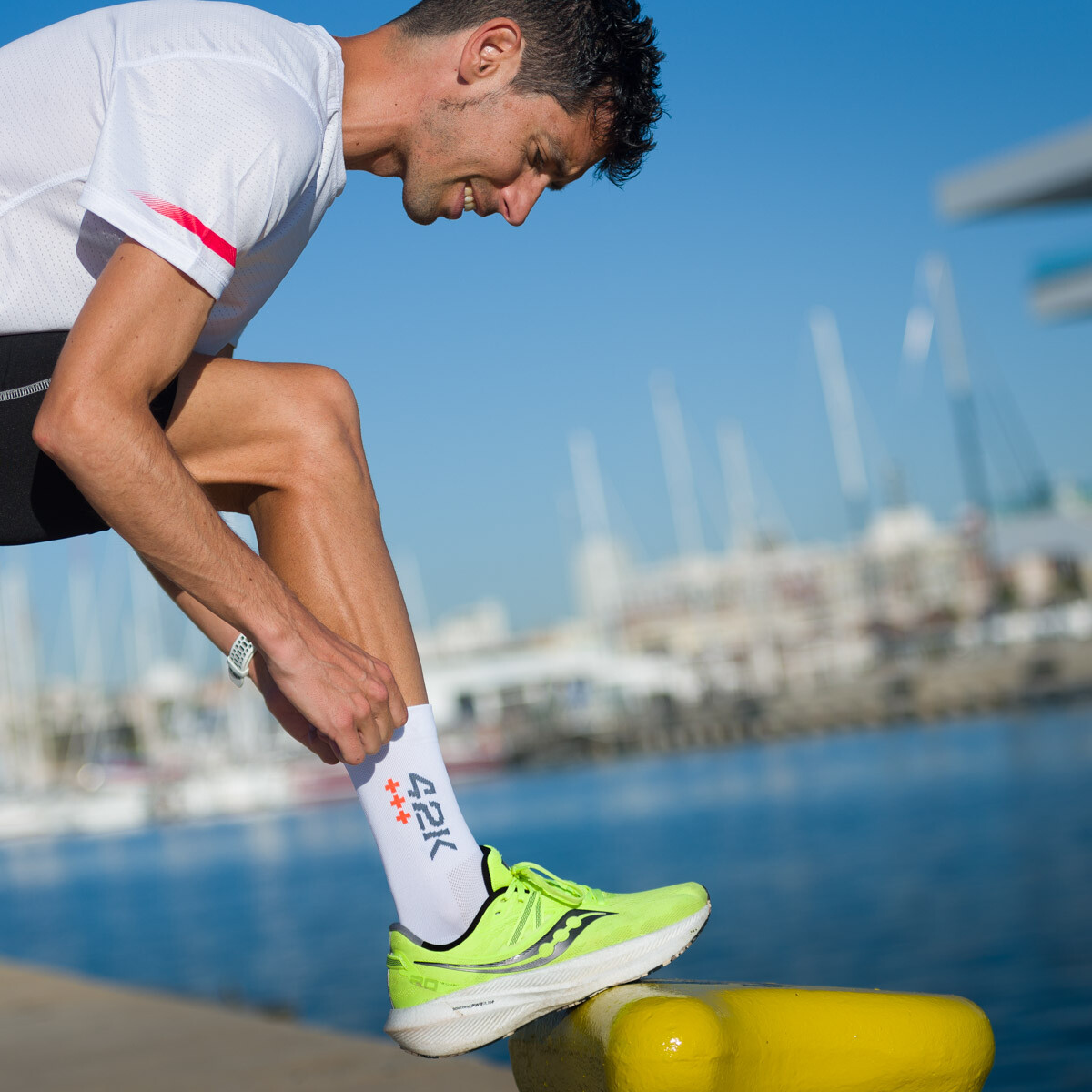
Its fabric and design make it feel like a second skin thanks to its semi-compressive fit. guaranteesn a excellent performance during sports practice, both in short distances and in long runs, standing out for its comfort, breathability and durability.
The Ingravity2 are manufactured with VAPORFEEL PURE®, a material of high resistance to abrasion and impacts which makes them very durable. Another of its properties is that it transports moisture to the outside and keeps your feet dry. In addition, VAPORFEEL PURE® incorporates bactericidal action and antimicrobial which neutralizes possible discomfort and bad odors caused by bacteria and fungi on the skin.

Another of the singularities of this collection is that it incorporates a new treatment grip which favors the anti-slip of the foot
The Ingravity2 wear the logo 42K embroidery on the exterior side and are available in four colors: navy (blue), black, white y grey.
with these socks running Some of our athletes have already competed in long-distance events, such as Carmen Pérez and Sete Cerdán, in the demanding Climb to Pico Veleta (Carmen was the female winner), a 50-kilometer (+2.705m) test in the socks Ingravity2 demonstrated magnificent performance during the almost 5 hours of racing in the middle of August and on the hot Granada asphalt.

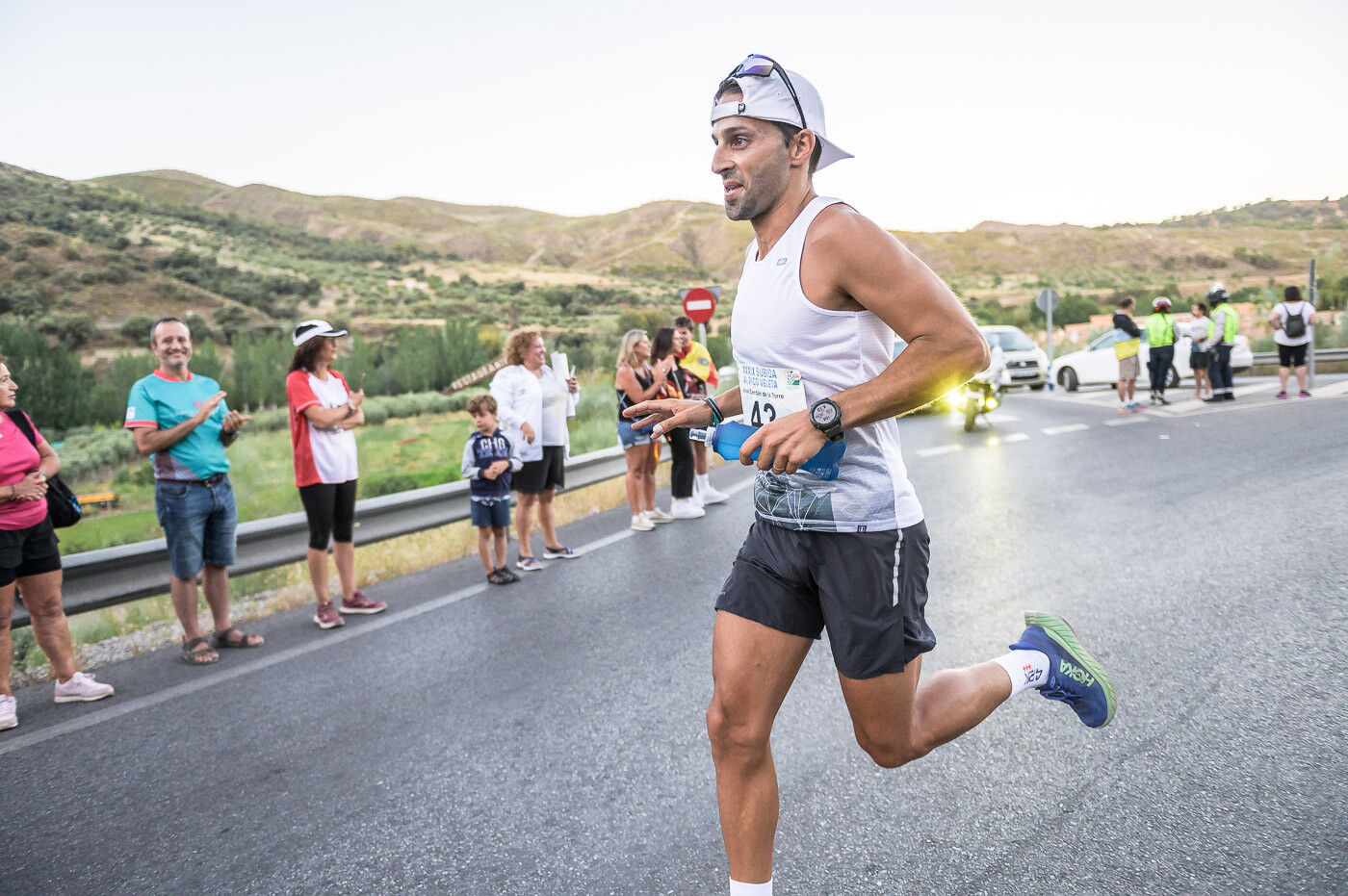
Etna2, socks running 14 cm
A few years ago we named one of the most successful collections of technical socks after the famous Sicilian volcano Etna. 42K.
The etna2 They are a total renewal of the successful Etna sock by 14 cms and are perfect for runners, both on asphalt and in the mountains, who want a high-performance technical sock of Average height y semi-compressive fit.
New ones have been incorporated into the Etna2 fluorine colors for those runners who want to put a striking splash of color to your strides, although they are also available in black and white for more classic runners.
The main improvement and novelty of the Etna2 is the preparation with VAPORFEEL®, a material used by some of the most important sports brands on the market to manufacture high-performance technical socks.
The thermal properties of VAPORFEEL® (especially optimal for humid climates) facilitate the transport of the sweat to the outside which helps keep feet dry, minimizing the risk of blisters and ensuring a high level of comfort in all types of training or short, medium and long distance races.
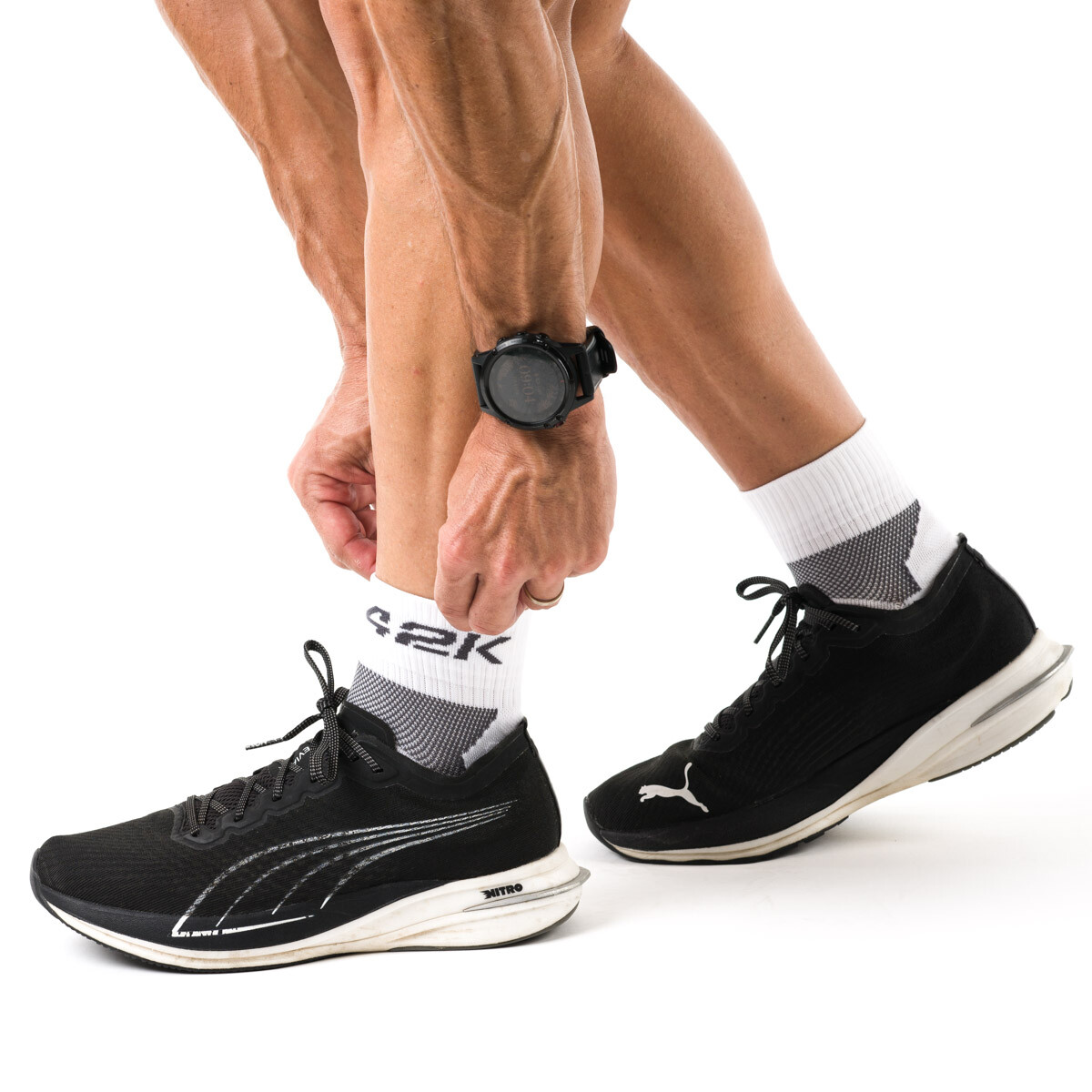
This material allows us to create technical socks that are perfect for intensive practice of running in hot or humid environments thanks to its optimal sweat evacuation capacity.
Incorporate reinforcements and specially padded areas en toecap, metatarsals, heel y Achilles tendon to provide protection and cushioning to the parts of the foot that can suffer the most during running.
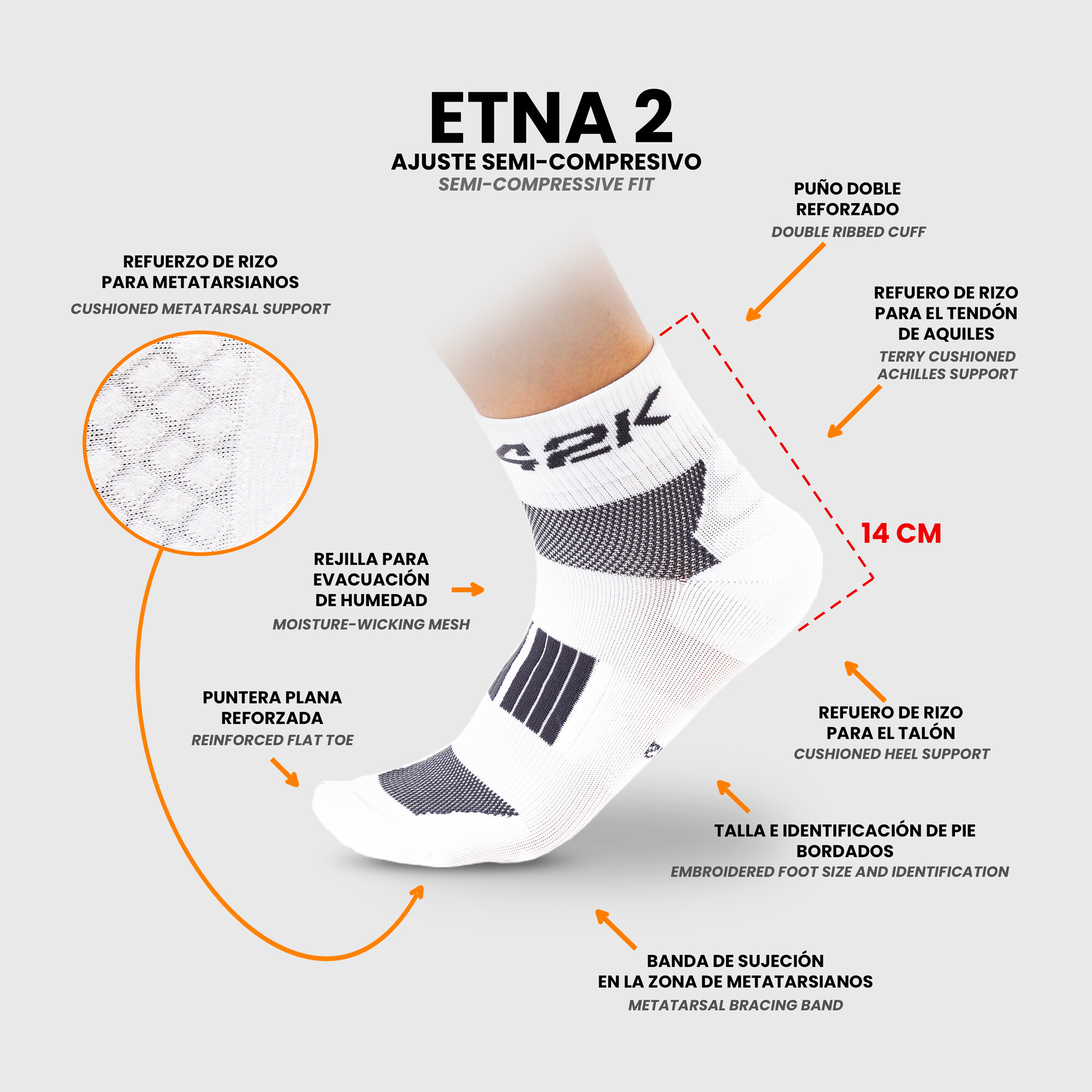
The Etna2 collection is made up of five colors: three fluorine (pink, yellow y orange), white y black.
Low Run, socks running ankle braces
The Low Run is the latest to join the catalog of technical socks for running and multisport 42K.
These are ankle socks fine tissueThanks to its 1 thread sewing, and are ideal for runners who want a light sock almost invisible that feels like a second skin.
The height of the shaft is at ankle level to offer protection against any possible friction with the collar of the shoe and on the back it has a special tab to avoid discomfort with the buttress.
Like the Etna2 collection, they are made with VAPORFEEL®, a high-density material that stands out for its lightness and resistance to abrasion, with optimal thermal properties for humid climates by transporting sweat to the outside and keeping feet dry to reduce the risk of blisters forming.
they have reinforcements and terry zones specially padded in the required areas (toe, sole and heel) to avoid discomfort from chafing.

The Low Run collection is made up of 3 colors: white, black y light sky blue.
The importance of good socks running
Choosing good technical socks is the best guarantee to enjoy the running. People who are starting out in the world of running They mistakenly believe that any sports sock is valid for running and that is not the case. The choice of Inappropriate sports socks can cause problems (irritations, chafing and even blisters) if used for regular running or long-term training.
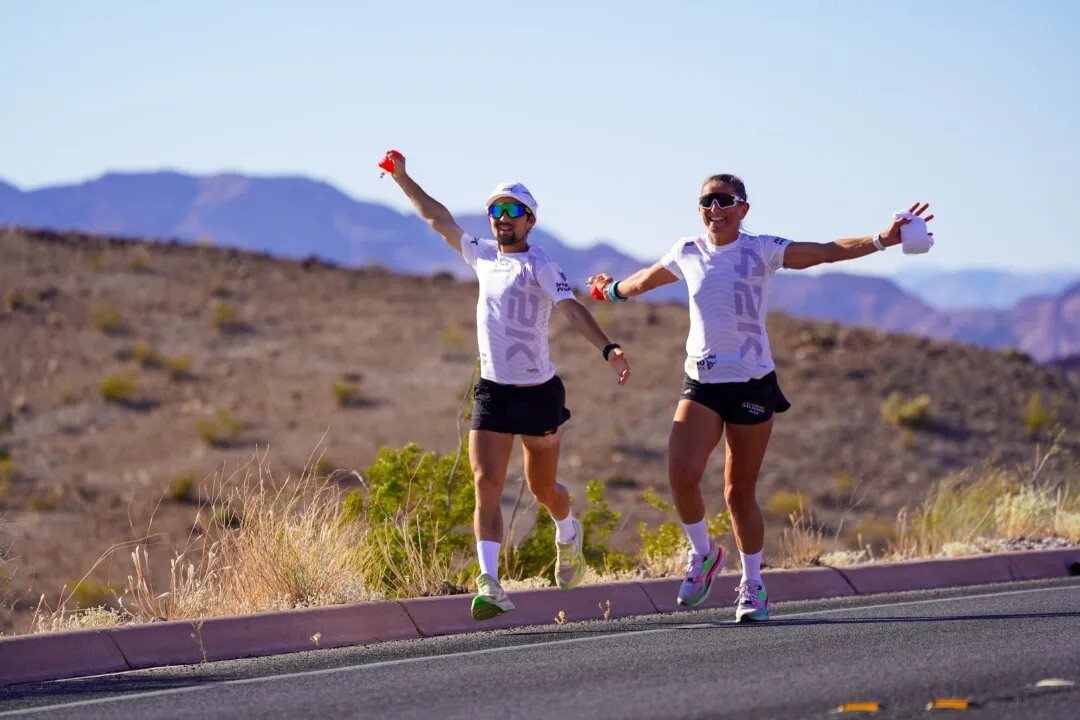
As we explain in another article on this blog titled Technical clothing to start running, the feet are one of the parts of the body that any runner must especially take care of and that is why the correct choice of specific socks for them is so important. running.
A Pair of healthy and problem-free feet They are necessary in any sport that involves running, but it is essential when the sport being performed is running.
And to enjoy the running With healthy feet you have to choose the appropriate technical material in terms of shoes and socks. In the case of choosing socks running You have to make sure that they guarantee good grip y protection of the most delicate areas of the foot, as well as correct evacuation of sweat to the outside to avoid risks of irritation or softening of the skin.
42K commitment to the preparation of its different collections of socks running by high-quality technical fabrics that stand out for their qualities of elasticity and fit, breathability (important in any sports sock, but essential in a sock for running) Y durability.
Socks running made in Spain
All socks running 42K are made in Spain and are offered in savings-packs that allow their purchase with a 10% discount on the unit price.
Fartlek It is one of the terms that is part of the universal language of running. Fartlek is a swedish word which means “speed game” and give name to resistance training method developed by Swedish coaches Gösse Holmer and Gösta Olander in the 30s
Almost one hundred years after its implementation, this training method continues to be widely used in athletics and also in sports. running popular.
In this article we are going to analyze the benefits of fartlek, how to do it and what it is for.
Fartlek or variable continuous training
Resistance training methods can be grouped into two types: constant continuous training y variable continuous training (fartlek). Continuous training is characterized by no recovery breaks.
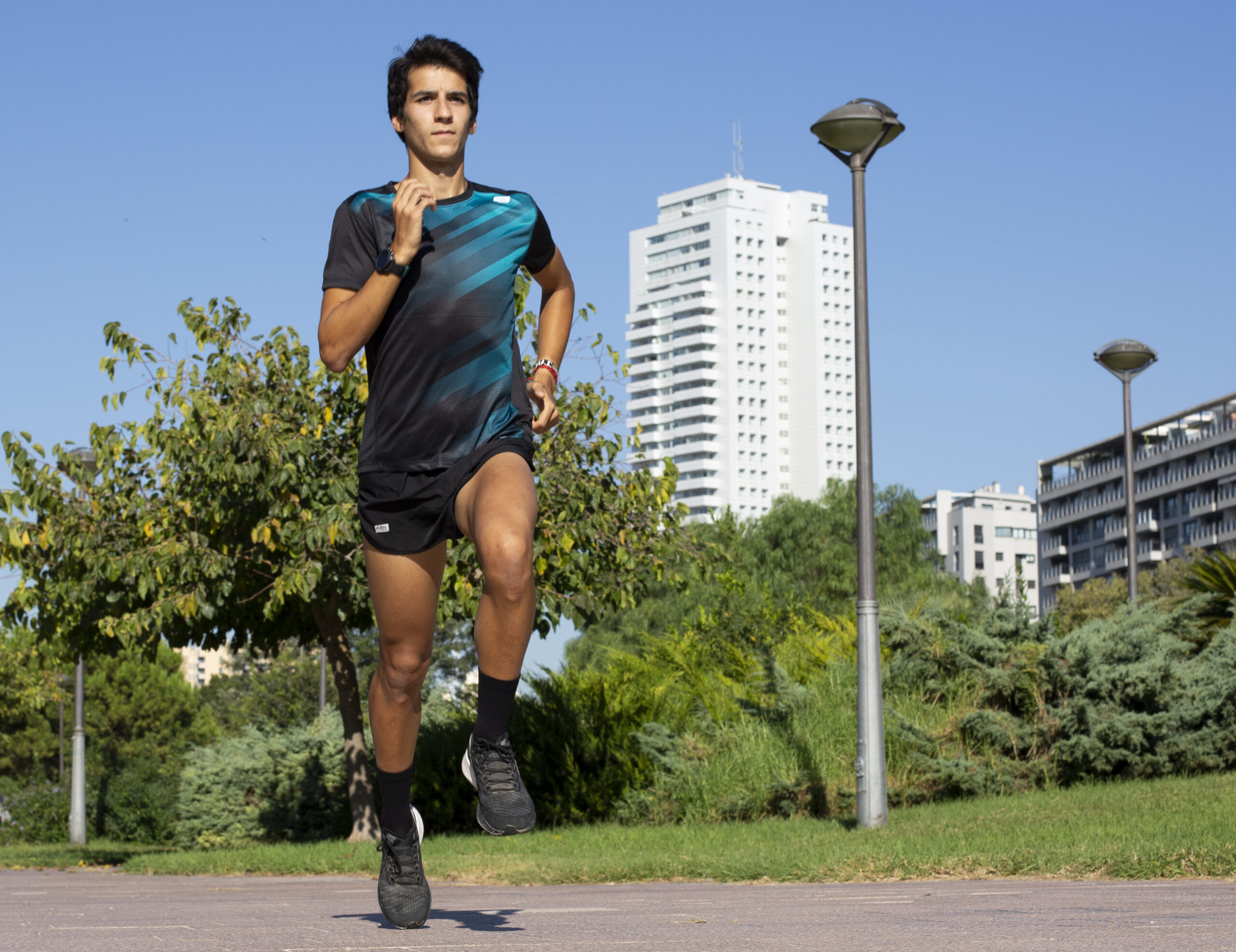
The training continuous constant serves to improve the aerobic resistance and, in summary, it consists of traveling a long distance (more than 30 minutes of continuous running) at constant intensity, no change of pace and without taking recovery breaks.
The training continuous variable or fartlek, instead, introduce changes of rhythm which can be forced by the terrain or the speed of the runner. That 'adaptability' to changes of pace is why its creators baptized it as a “speed game” (fartlek).
Fartlek is a highly effective and versatile training method, used in the running to improve la resistance, speed and aerobic capacity.
This type of training combines intensity intervals with lower intensity recovery periods; Depending on the level of the runner, recovery can be done by running or walking.
It is a training in which there are no breaks for recovery; You do not stop running and alternate changes of pace (it can also be done using ''CA-CO'', which is WALKING and RUN; this option is the most recommended for beginner runners or for runners who are returning after a long time break due to injury, illness...), it can also be done on varied terrain, which makes it a powerful tool for runners of all levels.
Benefits of fartlek training
Let's see below the benefits that the variable continuous training method or fartlek can bring.
- Improvement of aerobic and anaerobic capacity. Fartlek involves alternating intense rhythms (depending on our goal, more or less intensity) and softer rhythms. This It helps improve the aerobic capacity, which is the body's ability to use oxygen during prolonged exercise, such as anaerobic capacity, which refers to the ability to perform intense efforts for a short period without depending as much on oxygen.
- Increased resistance. The variability of rhythms in the fartlek simulates the variation in intensity that can occur with changes in pace in the race. This improves mental and physical resistance, preparing runners to cope with different conditions during a competition. In the winter season, some athletes who prepare cross (a long-distance athletic modality that takes place partially or totally in cross country) they usually use the fartlek in their training. Cross country is a modality that is run on a circuit and in which a constant pace is not maintained; 4-5 laps are usually completed (depending on the competition) on a circuit of about 2 kilometers in which there are many turns, ups and downs, irregular surfaces... The fartlek can simulate what happens in a cross-country race.
- Burning calories. Of interest, high-intensity intervals in fartlek increase calorie burning during training. This can be beneficial for weight loss or maintaining a healthy weight.
- Specific training for races. The fartlek can be adapted to simulate the conditions of a specific race (such as a 5K, a 10K, or even a half marathon), greatly helping runners adapt to the paces and challenges they will encounter in real competition.
Without going much deeper into other more specific benefits for elite athletes, as a summary we could indicate that fartlek promotes improvement of rhythm and speed, allows you to obtain a diversity in training, helps improve the mental preparation and adaptation to diverse terrain facing the competition.
Alternating between faster and slower paces helps runners develop a better sense of rhythm and speed. Fartlek allows you to vary training and avoid monotony, something that can be especially useful for maintaining motivation and avoiding stagnation in performance.

It is also notable that high intensity intervals in fartlek they challenge the mental resistance of runners, helping them overcome fatigue and improve their ability to manage discomfort during races; and if the intensity of the intervals varies depending on the type of terrain (uphills, downhills, uneven surfaces) it can also be of great help as preparation and adaptation to the different race conditions that the athlete will encounter.
How to do fartlek training
We have already seen the benefits of fartlek, so now it is time to explain how to perform fartlek training:
Heating. We will start with a proper warm up to prepare the body for effort. Initially we will do joint mobility exercises and then we will start running 10'-15' depending on our level and at the end we will do a little running technique.
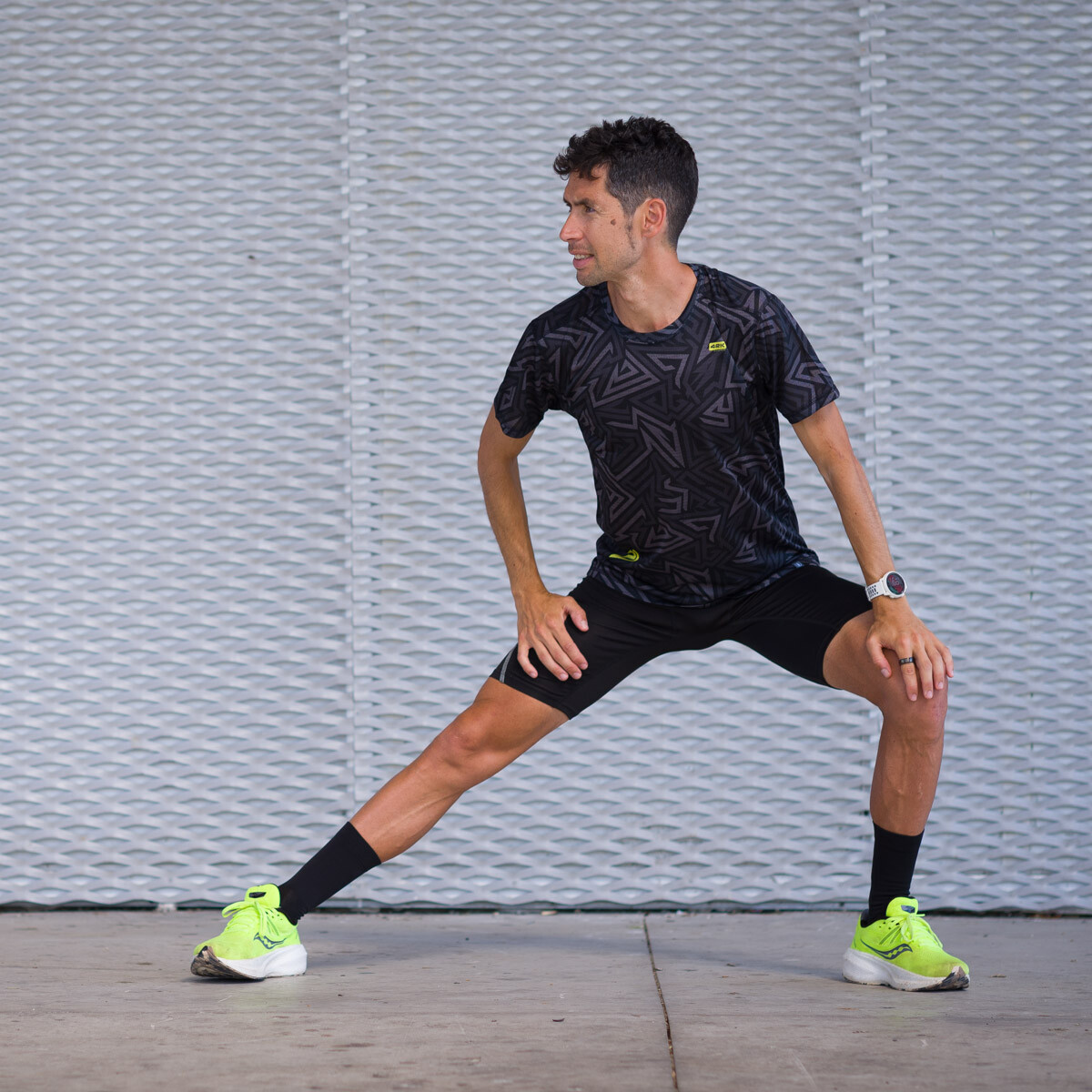
Interval Run. Depending on our objectives we will do a number of repetitions or others during the race, alternating between high intensity intervals and lighter recovery. For example, a runner with a 10K goal might start with a 6 x (2′ + 1′) fartleck doing the 2′ a little faster than the first threshold and easy recovery minute. Instead of going at a rhythm you can also do it by pulse. The ratio of time between intervals and recovery can vary depending on your goals and fitness level.
Variety of rhythms. It can be played with different rhythms and interval durations. You can run short, fast intervals, or longer, moderate intervals.
Varied terrain. If you are an athlete who prepares cross-country, choosing varied terrain (dirt terrain with moderate ups and downs, with curves...) will be very interesting and positive to achieve a good preparation for this modality.
Back to the calm. We will have to finish the session with a phase of lowering heart rate by doing a very light jog of 3'-5'.
Variability. Alternating between fartlek sessions and other types of training, long runs and recovery days is very convenient to maintain a balance in the training program.
Application of fartlek training by levels
Beginners. Beginner runners can start with shorter intervals and longer recovery. This allows you to gradually adapt to the intensity and build a solid base.
Intermediates. Intermediate runners can experiment with different work-to-recovery ratios, progressing to longer, more challenging intervals.
Advanced. Advanced runners can implement the fartlek as part of their weekly training plan. They can incorporate race-specific intervals and simulate competition conditions.
In summary, fartlek training in the running provides wide range of benefitsat improve endurance and speed until developing the mental resistance and the adaptability to different race conditions. Its flexibility and versatility make it an essential tool for runners looking to improve their performance and enjoy variety in their training.
In this article we are going to discuss the tibial periostitis, an injury that any runner should fear because it is causing frequent pain in the tibia, the bone we commonly know as the shin. It is a lsion or pathology typical of runners, mainly for long-distance runners.
Tibial splints is a disabling bone injury, painful and does not heal quickly. Fully recovering from tibial periostitis may require, at a minimum, 50 days without running. It is not surprising, therefore, that anyone who has ever suffered tibial periostitis categorically states that it is a fearsome injury.
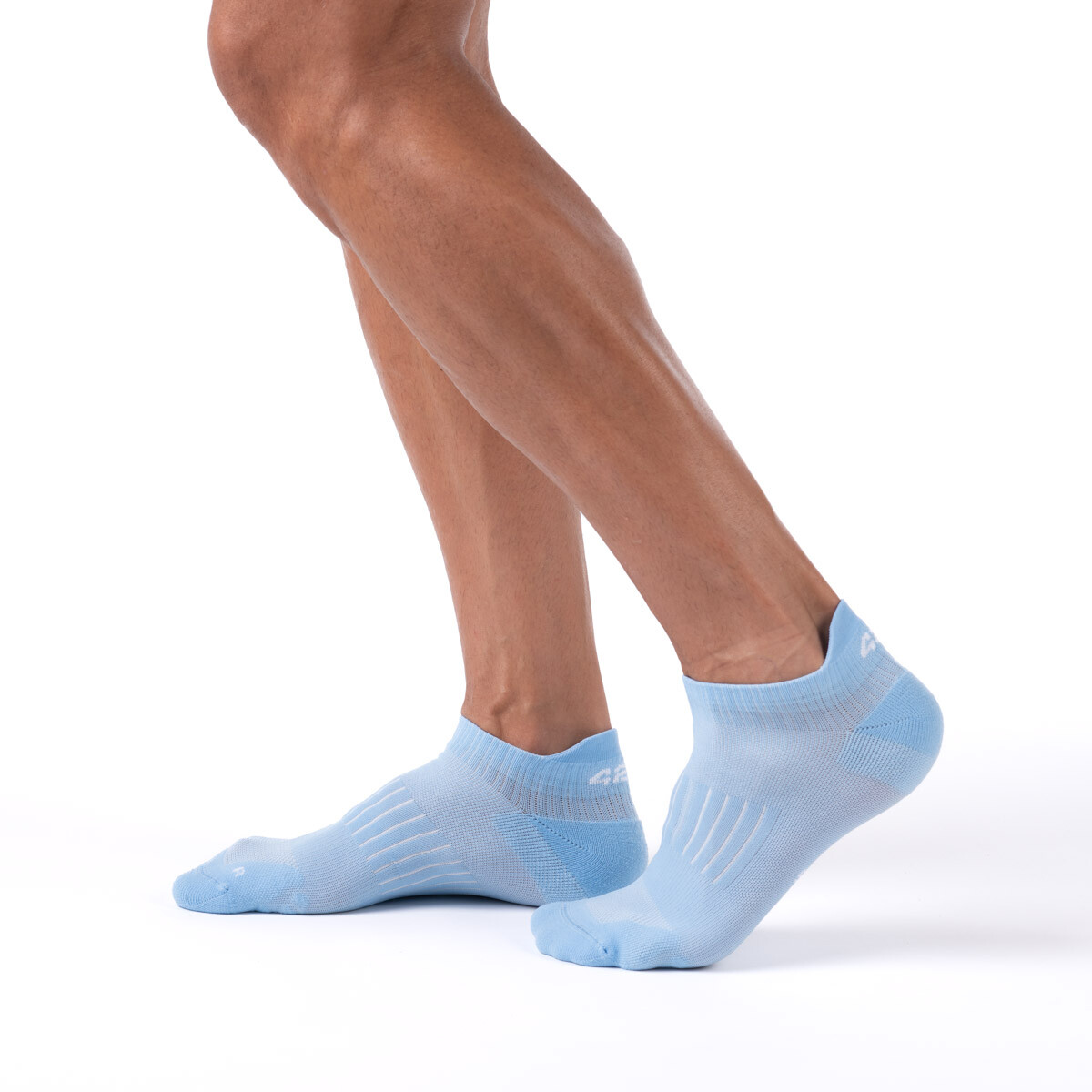
Overtraining, one of the common causes of tibial periostitis
In October comes a very important sporting event for elite athletes but also for thousands of popular runners: the Valencia Half Marathon.
A half marathon, with its just over 21 kilometers, is a distance that already requires specific preparation and that should not be tackled without adequate training. One fact is enough to clearly understand why this is a demanding test: the 21 kilometers and 97 meters of a half marathon involve an average of 42.000 impacts for any runner.
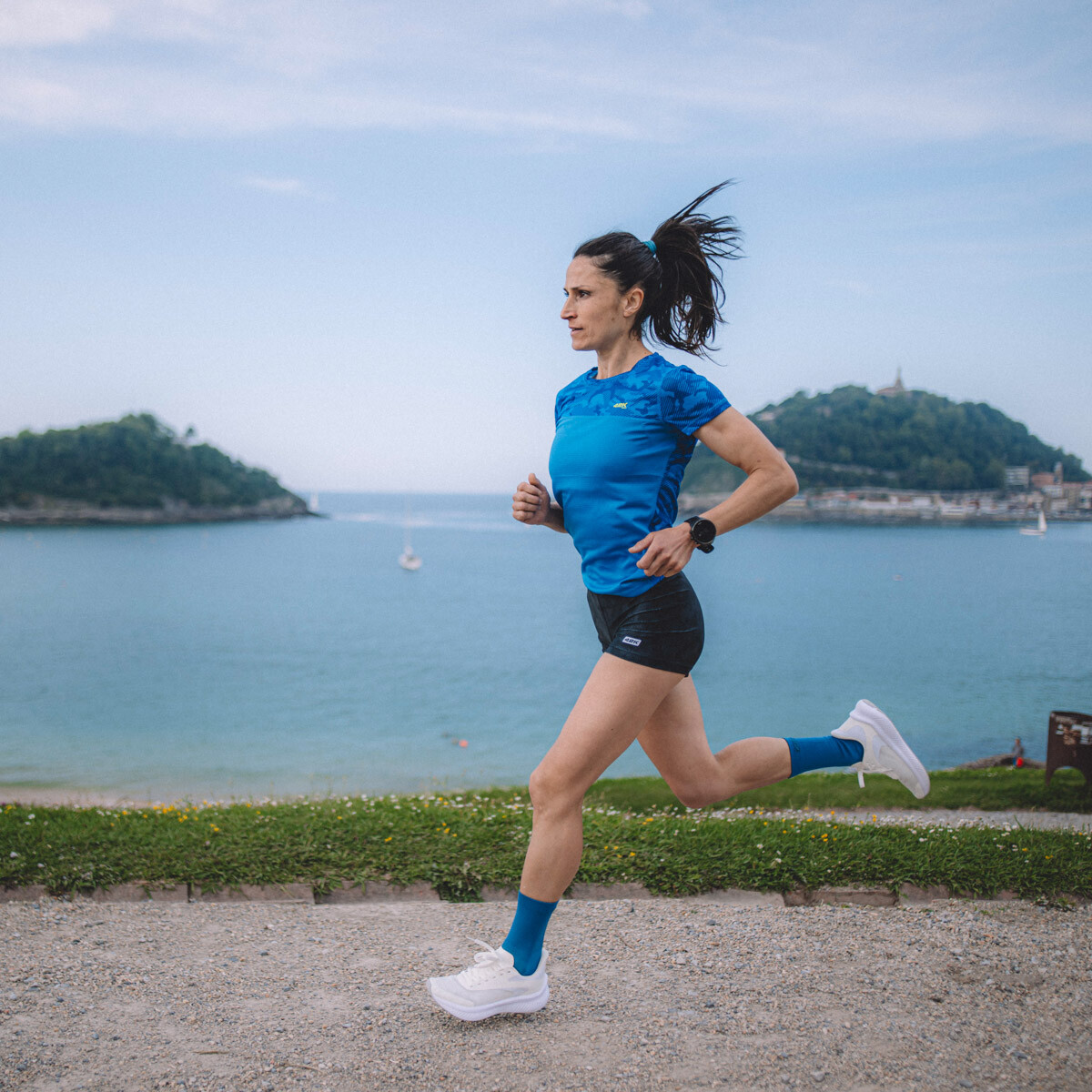
Many runners take part in the Valencia Half Marathon as part of training for the Valencia Marathon, which usually takes place 5 to 6 weeks later.
One of the big mistakes that are made on the way to preparing for a marathon is overtraining or overtraining. And one of the risks of overtraining is suffering from tibial periostitis, a fairly common injury among popular long-distance runners who make the mistake of doing training at high and inappropriate intensities and volumes without having the appropriate muscles for it.
Once again we have to remember the importance of strength work to have the necessary strength and stabilization in the ankles, legs, hips and core muscles to ensure that the legs are prepared to withstand the repetitive stresses and impacts of running.

What is shin splints?
By definition, tibial periostitis (known in medical terms as 'syndrome medial stress of the tibia') is a inflammation of the periosteum, that is, the membrane that covers the tibia on the external surface and unites it with the gastrocnemius, anterior and posterior tibial bones, and peroneal muscles.
The bones have a spongy structure that is designed with trabeculae, whose function is to cushion and redistribute the loads of the impact against the ground, generating a cushioning and force absorption system that will improve biomechanics and shock absorption between bones when the action of running is performed.
Tibial periostitis is caused by inflammation of the membrane that covers the tibia bone, the periosteum. When there is inflammation of the periosteum, poor absorption of loads occurs and microscopic lesion at bone level which can become a fissure or stress fracture. That is, with each impact the bone is injured with the importance it has on a biomechanical and functional level since it is the structure where it has to support all the weight of walking. And also in the structure where all the biomechanical and structural parts of the human body will be joined.
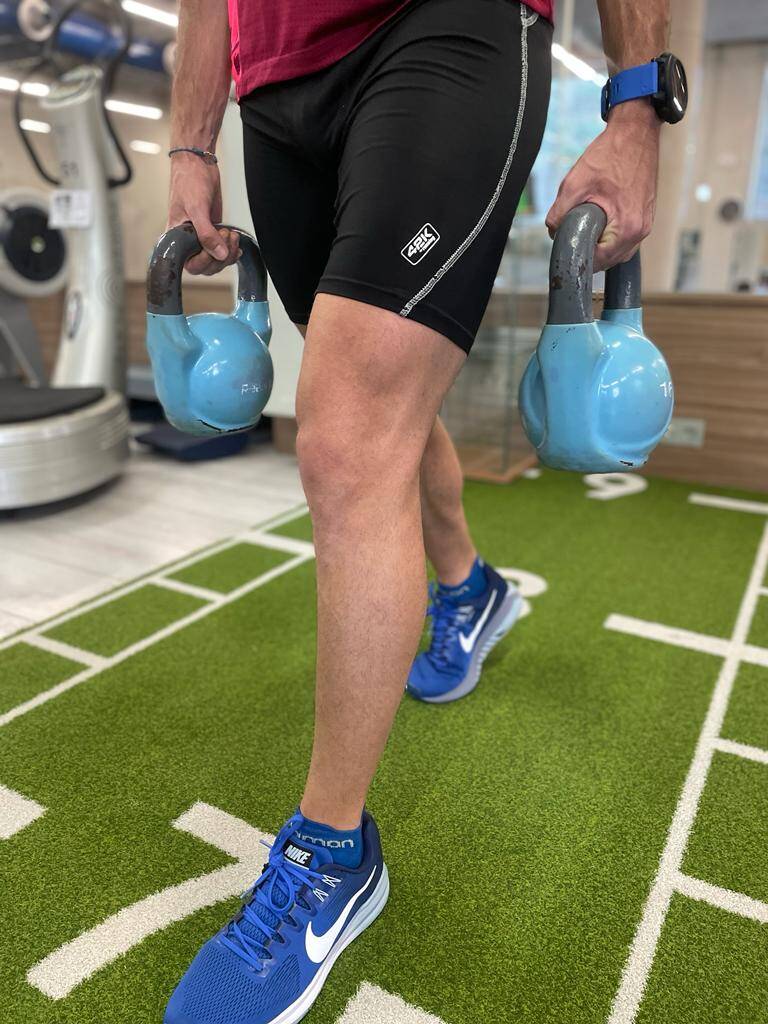
Bone is a living structure and a highly vascularized structure that with each impact that injures your skin will activate metabolic situations that will generate new bone, what we call in the world of sports bone remodeling, which under normal conditions improves and makes stronger the bone but in pathological and inflammatory conditions they damage it.
Tibial periostitis is an injury that begins mildly, with pain in the shinbone(s) when you finish running; Its evolution, if the impact and cushioning are not corrected, causes the pain to become increasingly frequent and bothersome during training and also after training. Tibial periostitis evolves with inflammation and very acute pain on the tibia that becomes so disabling that there are athletes who cannot even walk.
Factors that can influence the appearance of tibial periostitis
Normally, tibial periostitis is indicative of a structural biomechanical problem. It can be the consequence of a short leg, a problem caused during growth or during sports adaptation due to intrinsic factors such as muscle contractures or shortening of muscle chains, which generates what is known in physiotherapy as a short leg. There are also factors such as excessive bone growth in an asymmetrical manner; For example, a person with a longer femur than the other will find that, when absorbing impacts, the short leg assumes more load and this generates pain in the tibial area.
The main factors that can influence the athlete to suffer a loss of cushioning and that this generates tibial periostitis are:
- Athlete above healthy weight or overweight.
- Athlete who suffers from foot disorders, whether valgus or varus, that directly affect the reception of body weight during impact.
- Athlete with a structural biomechanical problem due to having a shorter leg.
- Athlete with poor running technique.
In relation to the 4 previous points, we will now see keys to improve the impact and achieve the necessary re-education so that the tibias can support more load.
- Athlete above healthy weight or with overweight.
- Every athlete must be at their optimal weight and additionally work on strength exercises that improve movement patterns and help the athlete have the strength to endure the competition.
- Athlete suffering from foot disorders whether they are valgus or varus, which directly affect the reception of body weight during impact.
- Every athlete should have a trusted physiotherapist and podiatrist who help improve the intrinsic musculature of the foot and generate a biomechanical study of running and the foot in order to improve impact cushioning through intrinsic work on the foot muscles.
- Athlete with a structural biomechanical problem due to having a shorter leg.
- Generate a biomechanical and radiological study to ensure that the athlete does not have a structural anomaly that quantitatively and qualitatively conditions a real short leg. If you have a real short leg, we will need a podiatrist to generate a template that corrects dysmetria.
- Sportsman with a bad career technique.
- The athlete needs good running technique so that the cushioning process in each impact of the stride during the competition has good load absorption and does not generate inflammation of the tibia that could end in a bone fracture.
Tips to prevent tibial periostitis
My experience as a physiotherapist allows me to indicate the following tips to prevent tibial periostitis.
- Go to the physiotherapist to obtain a biomechanical assessment of the leg and foot in order to find out if there is a structural predisposition to suffer from tibial periostitis.
- Hydrotherapy. Physical work in the water to reduce loads.
- I work with bicycle and elliptical to remove impact.
- Work strength. Work in the gym must be taken very seriously to improve strength patterns and ensure that the muscles are prepared for impacts.
- Improve with a physiotherapist the term muscle in relation to gait patterns.
- Having hip and knee mobility that improve the possibility of ankle impact.
- Remove muscle tension from the tibialis anterior and tibialis posterior which are muscles that directly influence the pressure of the tibia.

Tibial periostitis is an injury that is too often not given due importance with the appearance of the first symptoms. The problem with tibial periostitis is that when it is given importance because the pain is already intense or begins to be disabling, it is when the injury has already entered a phase in which it prevents continuing running because each new impact will worsen.
September arrives and the pain in the sole of the foot begins, and when you go to the doctor he tells you about the "flip flop disease" or, technically, of the Plantar fasciitis.
Obviously, the misuse or abuse of flip flops is not the only cause that can cause plantar fasciitis, but physiotherapists can affirm that many of these injuries would be avoided if the use of flip flops were limited and they were not used continuously.
But what is plantar fasciitis? Plantar fasciitis is a inflammation of the Plantar fascia (o plantar aponeurosis) that covers the sole of the foot.
Plantar fascia injuries are very painful and disabling for a runner for being the support in the race; if the runner also tends to have a cavus foot and a valgus ankle, it is more likely to end up suffering from the dreaded plantar fasciitis with improper use of flip flops.
Plantar fasciitis, a very common injury after the summer
Plantar fasciitis is an injury very common in physiotherapists' offices after the summer period.
When summer arrives, there is a logical change in footwear and we go from closed footwear to more open footwear, which does not support the entire foot and the problem can arise when the use of footwear such as flip flops is abused.
This is because when we wear flip flops, the center gravity is usually later freeing the first toes (the first and fifth meta), generating an attraction on the back of the foot, on the calcaneus that will tighten the fascia with each step we take, especially in toe flip-flops (like the hawaiian).

Due to this posteriority of the center of gravity, we will lose mobility in the ankle, generating a tendinopathy associated with the Achilles tendon, an overload of the calves that will pull on the calcaneus, generating more tension on the sole of the foot and creating a deficit in the buffer function.
Plantar fasciitis can make daily activities difficult
Plantar fasciitis is a pathology that should not be confused with posterior tibial nerve entrapment and Baxter nerve entrapment, which gives pain in the plantar fascia, confusing neural entrapment with a problem of plantar fasciitis.
You have to be very exhaustive and precise in the assessment to correctly treat the injury that really exists. In the case of neural entrapment, we must release the neuropathy to relieve pain, but this is not directly related to the lesion in the plantar structure.
If there is plantar fasciitis, that is, a real lesion in the plantar fascia, we have to give you a solution as soon as possible.
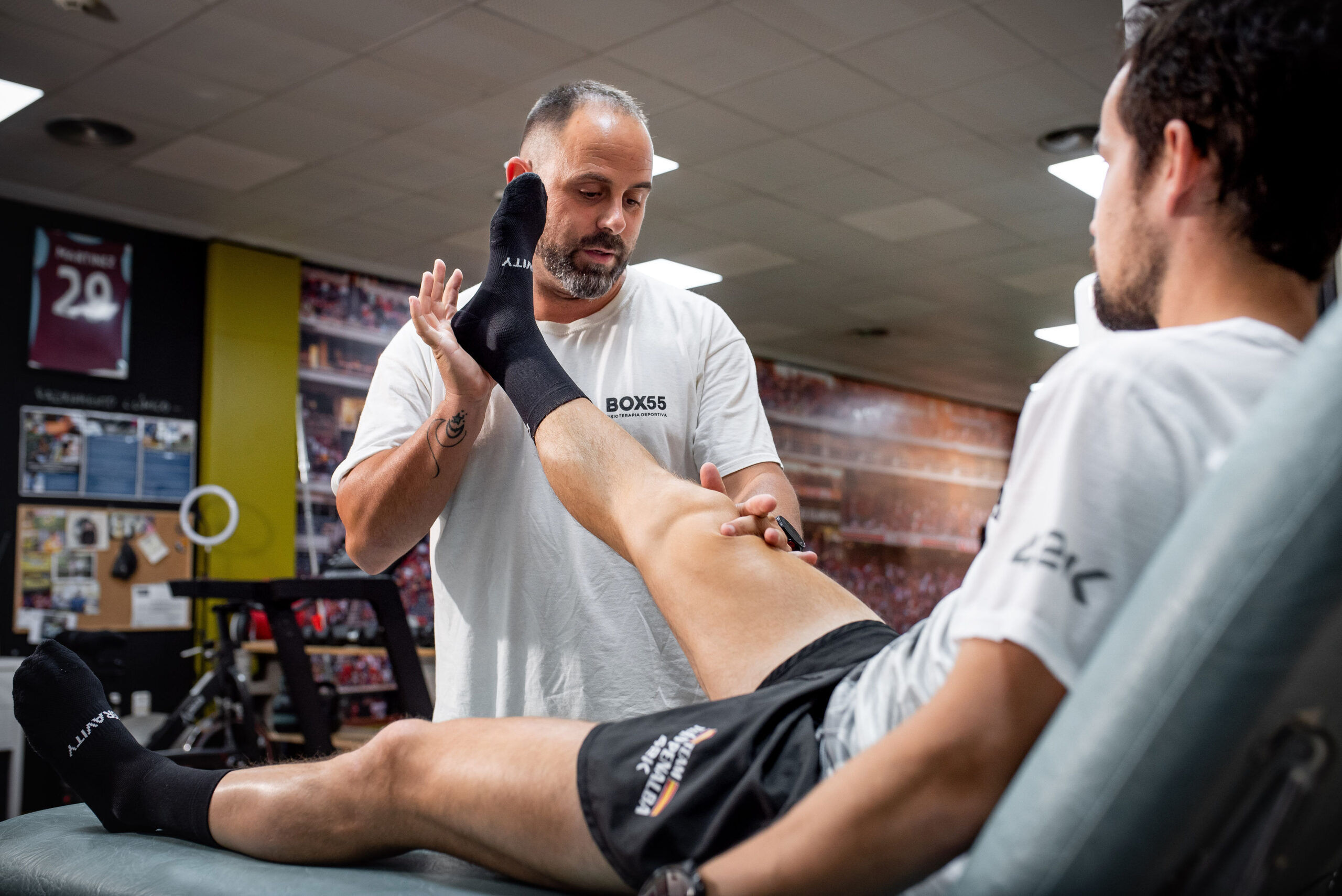
We are facing a setback that should not be underestimated because it can cause pain that makes daily activities difficult (we are not just talking about running anymore). And the great risk faced by those who do not quickly address the problem of plantar fasciitis is that to avoid the pain it produces, they end up changing the way they walk and that this ends up causing additional problems in the ankle, knee, hip or back.
The problem with this pathology is that it is a poorly vascularized structure, highly innervated and, in addition, it is where the weight of the body rests during the march, acting as a natural shock absorber in each stride we make.
The plantar fascia is a structure designed to cushion the impact and thus be able to distribute the loads during the race; It is a structure that will suffer in long-distance races (a marathon, for example) where the impact is always the same and will suffer less in short-distance races or where the impact is adapted to each step, such as in a trail.
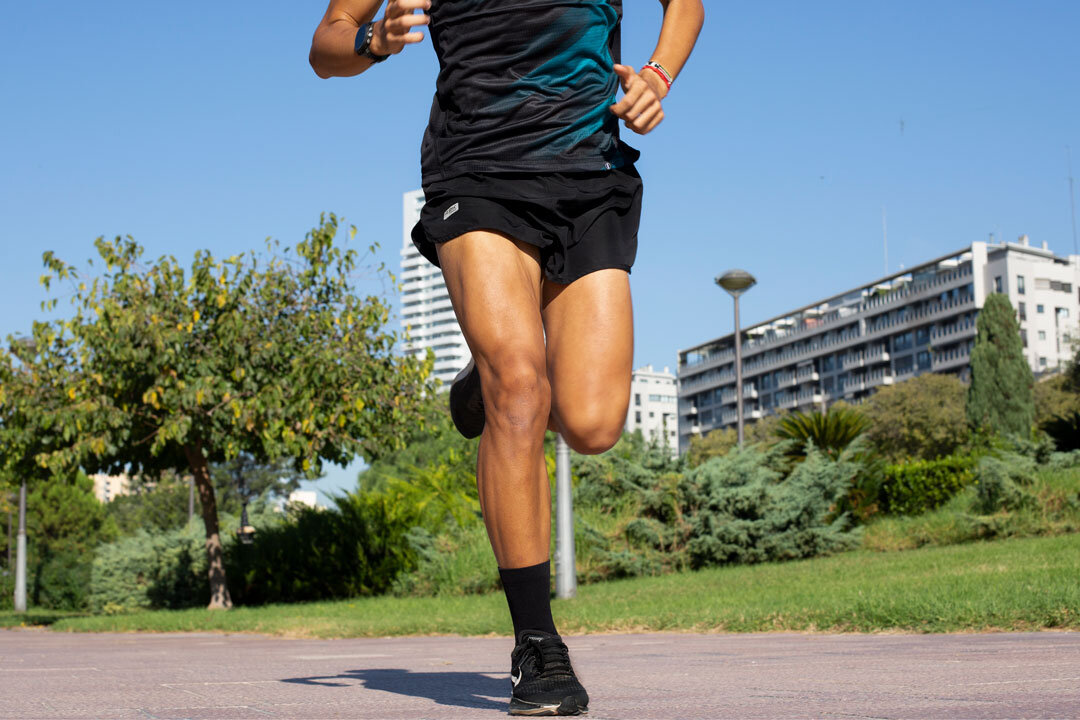
An injured fascia should measure approximately 40mm when an ultrasound is performed, and thus study whether the fascia is intact or damaged to differentiate whether it is tendinitis (inflammation) or tendinosis (degeneration) in both cases treatment by your trusted physiotherapist is mandatory and necessary.
It must be taken into account that an injury to the plantar fascia has a cure time of more or less 1 year Due to the fact that it is a little vascularized structure and therefore all the physiotherapy that can be applied to the tissue to improve the blood supply will improve the treatment and the decision of the plantar fascia.
Tips for using flip flops in summer
So, is the use of flip flops prohibited during the summer period? The answer, obviously, is no; the use of flip flops is not prohibited, but it is convenient to follow a series of recommendations to correctly choose the right flip flop to avoid the possibility of an injury as disabling as plantar fasciitis.
My advice for a correct choice of flip flops are the following:
- It must be comfortable.
- Preferably with an anterior inclination.
- Avoiding flip-flops that set the first goal and condition on the foot.
- Choice of bridge flip flop, comfortable, soft and cushioning.
- Alternate flip flops with walking barefoot.
- Do compensatory ankle mobility and calf and soleus stretches.
- Alternate the use of flip flops with slippers; what should not be done is to wear flip flops continuously.
Recommendations to recover from plantar fasciitis
As to home treatment to be done to help the physiotherapy treatment so that the structure heals and the biomechanics of the leg help to improve, my recommendations are the following:
- Apply heat to the sole area of the foot to improve vascularization
- Treat with Foam Roller, the gastrocnemius and soleus to remove tension in heel traction.
- Walking barefoot on different floors to educate the fascia to the pressure of the ground
- Avoid using flip flops.
- Avoid heels and platashapes.
- Perform foot muscle strengthening exercises, explained and directed by your physiotherapist.
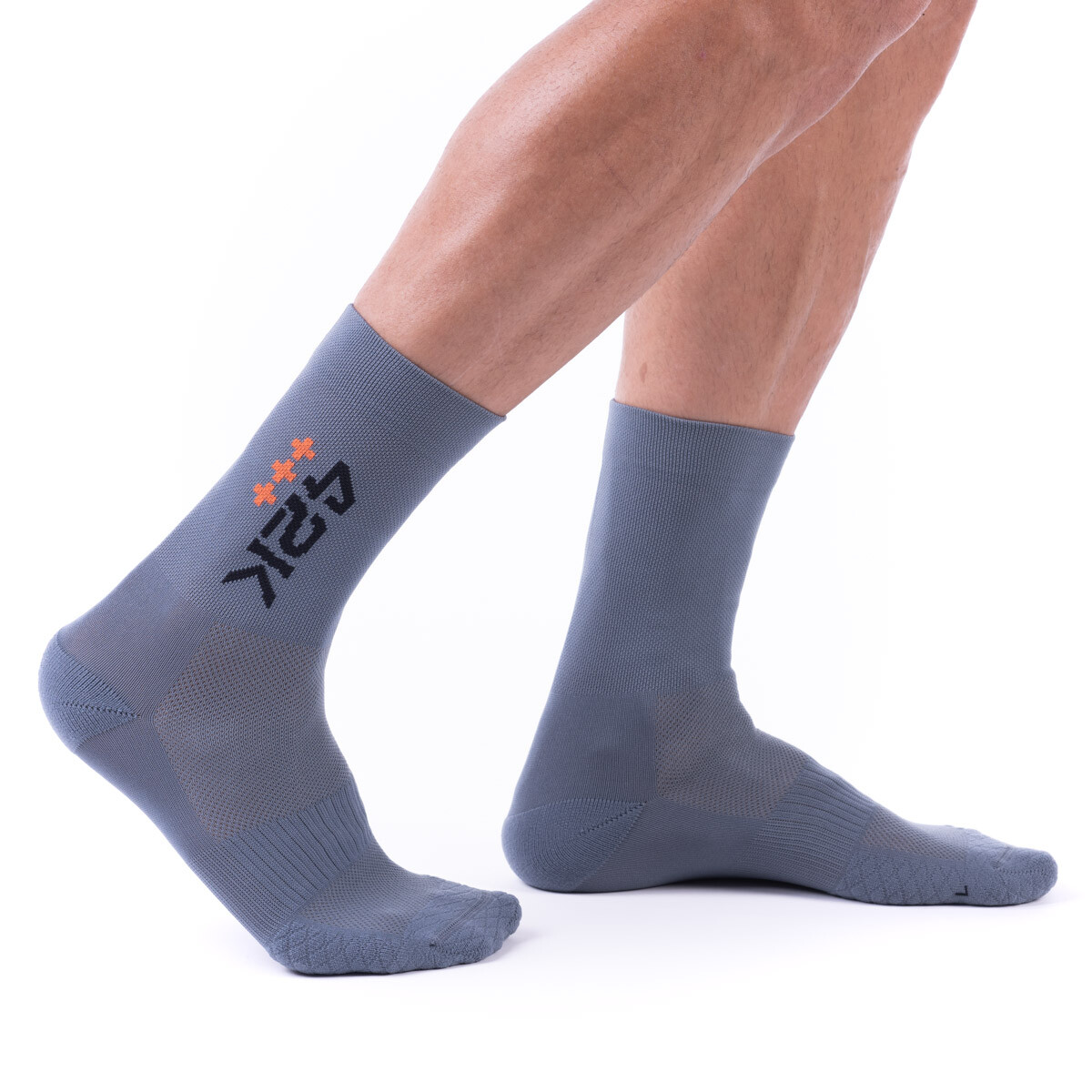
As we have indicated in other posts The best way to avoid suffering any injury is to prevent it.; Once the injury has occurred, it is extremely important to put yourself in the hands of a physiotherapy professional as soon as possible to work on the structural part of the injury while continuing to practice sports and be able to continue training to find the sporting objectives that you have set for yourself.
Other articles by physical therapist David Valenzuela, from Box 55.
If you are interested in other content related to injury prevention by physiotherapist David Valenzuela, you can find different articles on our blog that may be of interest to you.
For example, if you want to know how to prevent tendinopathy, you can find information in the article Tendinopathy, a 'hell' of injury. You can also find out how to prevent low back pain or meniscus injuries with the articles Low back pain, the good weather injury y How to prevent meniscus injuries.
If you are a mountain runner and you are interested in knowing how to prevent ankle sprains, you can read the article 3 golden rules to prevent ankle sprains on the trail running.
Starting to run after 40 is very common. In the last decade, both in Spain and in many other countries, the number of people who start running when they are close to 40 or even when they have surpassed them has grown remarkably.
reasons for this boom of runners after 40? The first reason could be that correr (The running) is in fashion and it has been shown that it is not a passing fad. Running has become a way of "invest" in health, leisure, relaxation...
For more than a decade now, the number of people who run (especially in the age bracket that goes from 35 to 50 years) is at levels that were unthinkable in the last decades of the last XNUMXth century.

Another very compelling piece of information is the comparison of the current numbers of participants in popular tests (5K, 10K and 15K), half marathons and marathons with those registered 20 or 25 years ago; The spectacular increase in the number of tests, both asphalt and mountain, that has taken place in the last five years is even very striking.
Still the percentage of men who run is higher that of women, but in the last decade (especially in the last five years) the growth of women in the running It has been very big in Spain.
A good thermometer is offered by the registrations for the races, which confirm a progressive growth in the percentage of female participation. And when analyzing the female participation in recent years in popular tests, it is observed that the highest percentage of female runners is concentrated in the age bracket that goes from 35 to 45 years.
Furthermore, another reason why running is fashionable and becomes the option chosen by many people who decide to do sports after 40 is that it is a cheap way to do sports and you can easily fit into complicated work schedules and family obligations.
Many people acknowledge having landed in the running from 40 to be the most flexible option to do sports that they have found without depending on fixed schedules and with the freedom of being able to put on their shoes and go out for kilometers at any time.
Before starting to run after 40, you should consult your doctor
As long as you do not have any health problems, physical limitations or are overweight (running with overweight can be harmful to joints, tendons and ligaments), start running after 40 can be healthy and positive, especially if it means abandoning a sedentary life and resuming physical activity. However, if you decide to start running after 40, it is advisable take a series of precautions to avoid unnecessary trouble.
And the first of the precautions must be consult with your family doctor in case you advise against running for any medical reason (chronic pathology, risk of specific injury due to a previous problem, incompatible drug treatment or that may affect heart rate...).
If the family doctor sees no problems, you can start adding the first kilometers of Thief (Walk and run, the method that we will see later), although it is very likely that he will talk to us about the convenience of performing a general check (a checkup and a blood test) and even submit to a stress test or ergometry to check the real physical state in which we find ourselves. For running it takes a healthy heart because it is a demanding physical activity.

From the age of 40, especially if you have not run before or are running again after a prolonged period of physical inactivity or sedentary lifestyle, it is necessary to be sure that the running It is not going to become a dangerous sporting activity or one that poses any risk to health.
Health and sport they must go always hand in hand. If our trusted doctor considers a review, analytical test and/or stress test necessary, we must listen to him.
General recommendations to start running after 40
Before listing a series of practical advice for anyone who decides to start running after 40, it is convenient to make some recommendation (or precaution) to take into account.
After making it clear that the first thing is to consult with our family doctor and follow his instructions (in terms of check-ups and revisions), we must also insist that certain things must be very clear from day one.
The first is Take it easy. There is no need to be in a hurry to progress. You need a adaptation period which can be more or less long according to each person; Logically, the adaptation will not be the same for those who have practiced sports regularly as for those who have spent several years without performing any physical activity or with a sedentary life.
Act quickly. start running little by little and, at least during the first 4/6 months, no competitive goals. After the age of 40, the body does not respond the same to the efforts that it does at the age of 20 or 30. From the age of 30 you begin to lose muscle mass (according to studies, between 3% and 5% every decade), so at 40 you do not have the same muscle strength, nor the same elasticity and recovery capacity after the efforts.
Therefore, it is necessary to be patient and favor the progressive adaptations of the muscles to the effort.

In general, if you have perseverance and strictly follow a training plan of 3 days a week, the normal thing is that three or four months after starting to run you begin to notice improvement (logically, everything will depend from the starting point of the physical state of each person).
So, you have to have patience and perseverance to overcome the adaptation period of 3/4 months which is usually what is normally needed to notice improvement and begin to "enjoy." Consistency is the best ally in any sport, but in running It is crucial and especially in the first months, which is when there are more reasons for discouragement.
The objective is progress 'with head' and without haste. Age makes you lose strength, aerobic capacity, flexibility... When you start running after 40 you have to be very sensible with training and with the efforts that are made in them. 'Forcing the machine' in the first months is going to mean a very high risk of discomfort and, worst of all, possible injuries.
Getting injured in the first few months of starting to run can be very discouraging because how much or little progress you have been able to make will come to nothing if you have to stop due to injury.
Practical advice to start running after 40
1. Follow a training plan
If you are starting from scratch or after a long period of inactivity, it is very important Have a proper training plan to the starting state.
The recommended thing to start running after 40 is to have a training plan designed by a fitness specialist. This way we will have the security of doing things right from the beginning and avoiding risks of injury. With a physical trainer who designs a tailor-made training plan, it will be much easier and safer progress.
Another option to get started running is CaCo method (Walk and run). The CaCo method is recommended for people who start running from scratch, but also for those people who return to running after a long break (whether for personal reasons or due to an injury), since it will avoid problems in muscles, tendons and joints.
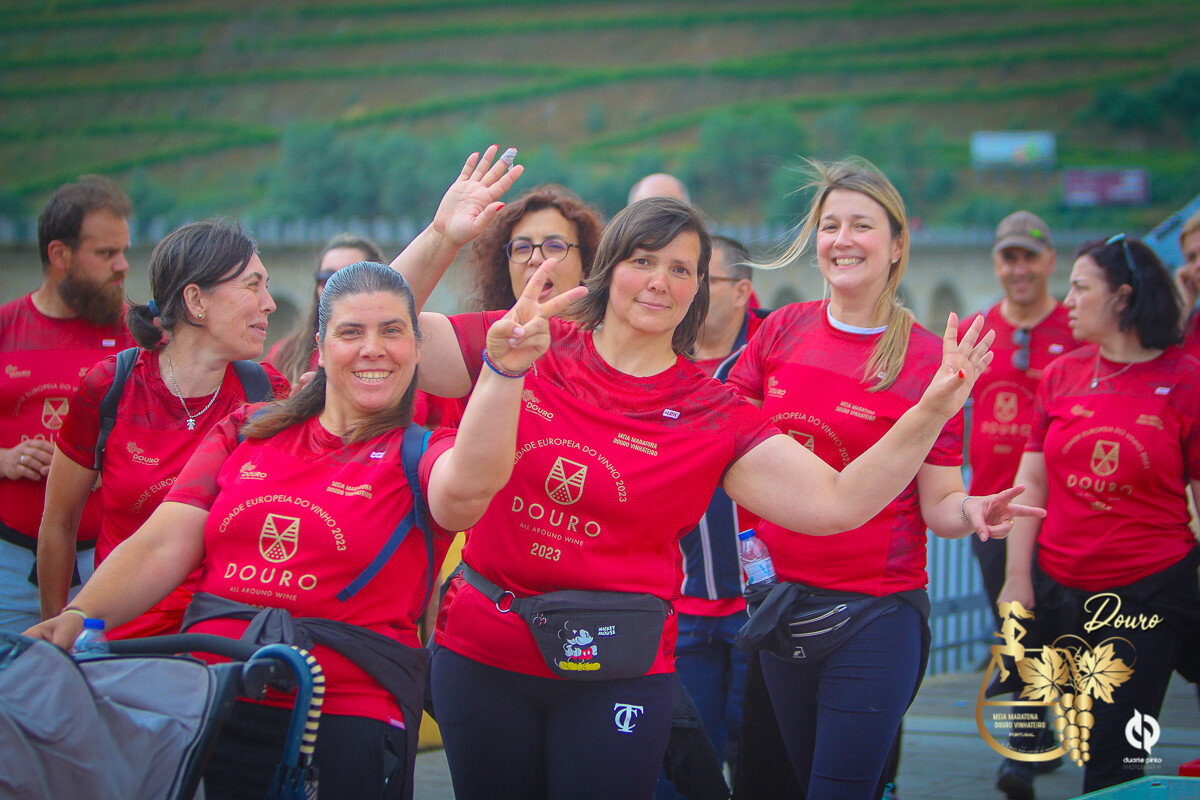
2. Invest in adequate and quality equipment.
It is not necessary to buy a state-of-the-art kit, but it is convenient correctly choose technical clothing and shoes.
The choice of slippers It is a subject that can be complex at first and that is why it is a good idea to seek advice from a specialized trade. You have to choose between more convenient to our footstepsa (supinator, pronator or neutral), weight (the weight is important to determine the ideal damping), number of kilometers weekly to be carried out and the terrain type on which you are going to run (dirt, asphalt...).
In our article 'Shoes to start running' We explain everything you have to take into account to choose a pair of shoes to start running.
The choice of technical clothing is, without a doubt, easier than shoes. You have to opt for light and comfortable clothing, that offer good breathability y speed of drying. In the article of this same blog titled 'Technical clothing to start running' A series of recommendations are detailed to know what to look for when choosing technical clothing to start running, especially what type of shirt and socks.
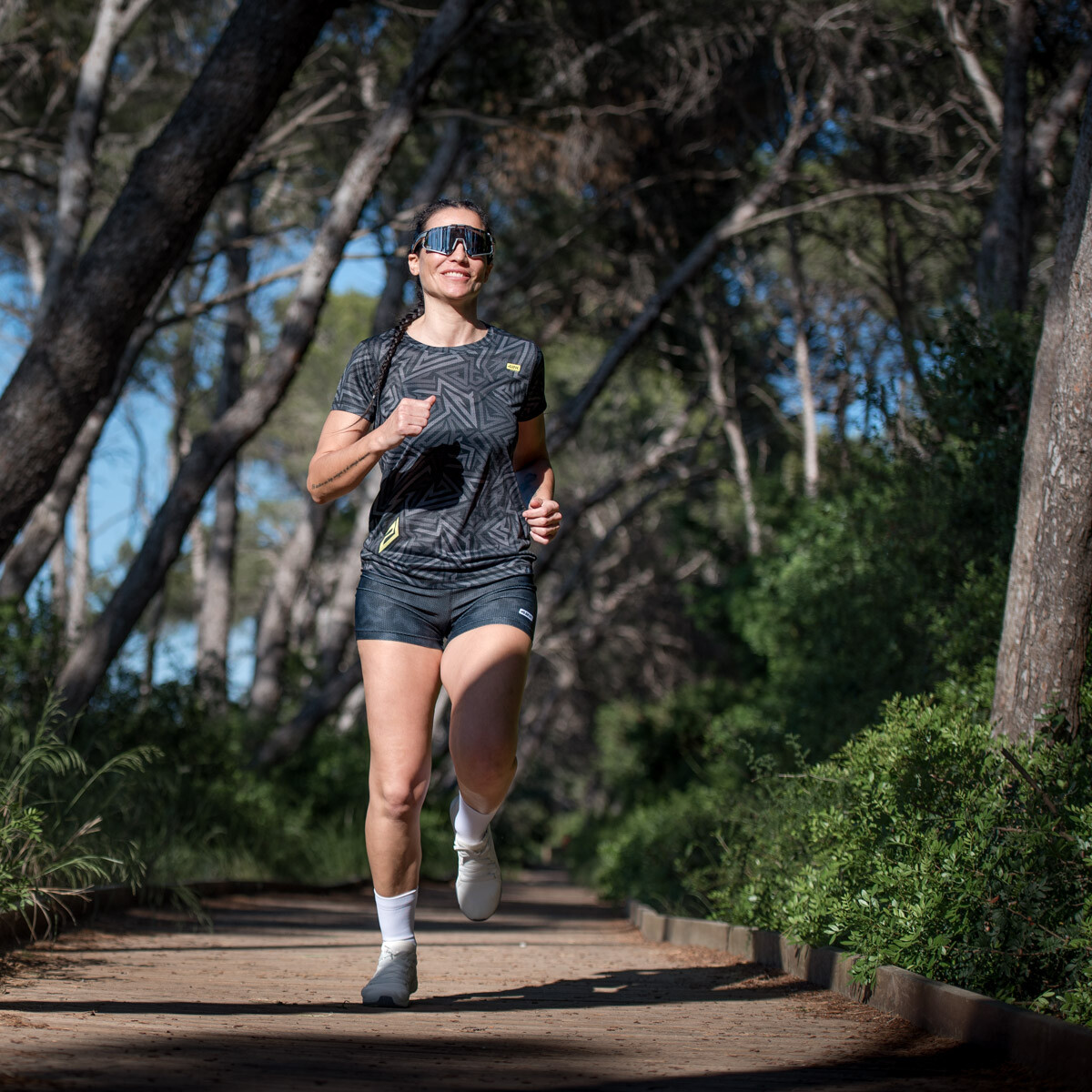
In our Online store You can find a wide range of technical clothing for running, both for men and women.
3. Warm up well before running
Warm up properly before running It is essential to prepare the body and especially feet, ankles, knees, and hips. There are no excuses for skipping the warm-up.
a good warm up It has many benefits: prevent injury, increase heart and respiratory rate, improve flexibility and improve concentration.
If you want to know more about the importance of warming up before running, you can do it with this article 'How to do a good warm-up before running'.
4. If discomfort appears, you have to stop
Act quickly. banish the idea of "no pain, no gain" (no pain no reward); pain is a warning that something is wrongSo anyone who decides to start running after the age of 40 and notices any persistent discomfort or pain should see a physical therapist or health professional to determine if there is a problem.

It is normal that during the first weeks (even the first months) the shoelaces, or what in scientific terms is called delayed-onset muscle soreness or DMAT, may appear to warn that the level of intensity of physical activity for which you are prepared has been exceeded.
That is, if one day you run faster or for longer than expected without having the appropriate physical condition, it is likely that you will suffer muscle fiber microtears which are the ones that generate the discomfort known as shoelaces.
The shoelaces are temporary and they go alone if you save a little repose and you combine it with gentle stretches and applying heat. What you should not believe is the false legend that 'the soreness disappears with more exercise' or that the remedy is to take sugar water; It's fake and it's dangerous. The shoelaces alert you that you have forced yourself too much, so rest for a couple of days and when they have disappeared, run again with caution.
What you do need to learn is how to differentiate stiffness from other muscle or joint pain that should put you on alert and ask for the opinion of a physiotherapist as soon as possible.
5. Healthy and balanced diet
Una healthy and balanced diet It is very important for anyone, but it is even more so in case of regular physical exercise and especially in people who start running after 40.
There are many variables that can affect the nutritional requirements or needs of a person (age, sex, weight, state of health, intensity of physical activity at work, intensity of sports activity...), but as a general rule it is necessary to bet on a complete diet that includes all the nutrients that the organism needs: carbohydrates, proteins, vitamins, fats and minerals.
And a very important aspect of a healthy and balanced diet is to take care of hydration, especially in summer. It is recommended to drink 1,5 to 2 liters of water a day, although hydration needs may vary depending on physical activity, temperature, humidity... On the importance of hydration, the article on our blog may be interesting for you titled The risk of dehydration in running.
If you have doubts or want to make changes to your diet and you don't know how to do it, it is advisable that you go to a registered dietitian-nutritionist.
6. Work the strength
If you're going to start running after 40, you must work the force. Strength training is very important for the entire population from the age of 40 (muscle mass begins to be lost from the age of 30) to maintain adequate muscle mass and to provide a state of healthy fitness as they get older. fulfilling years.
Stronger muscles will help us improve our performance in the gym. running. Force work is essential to progress and improve as a runner, but it is also very important to prevent injuries. It is essential to include strength work in the weekly training routine.
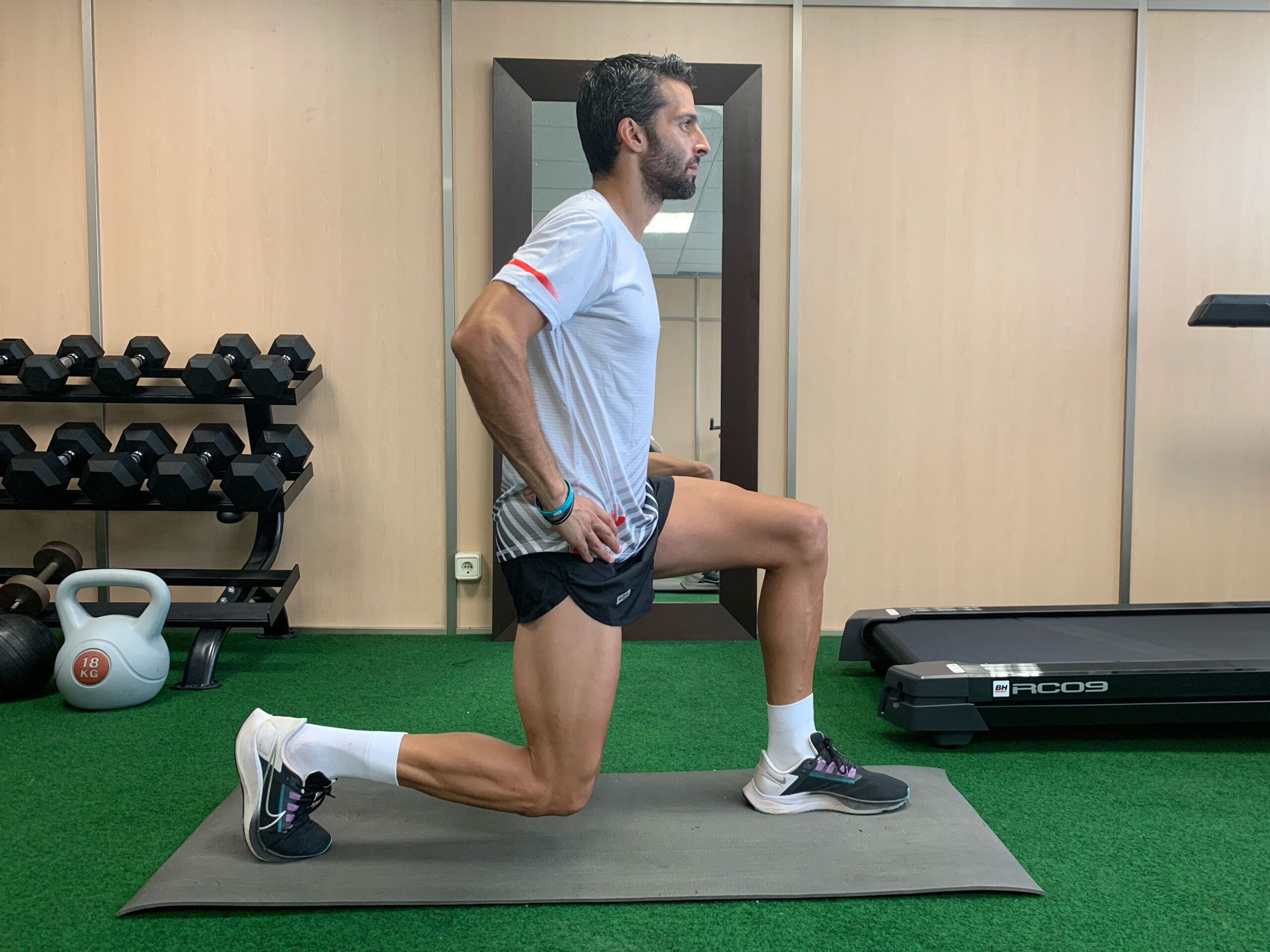
In our blog you can find different articles to learn much more about strength training and the importance it has to improve in the running. If you are starting to run or have been running for a while and don't know how to start working on strength, these articles can be very useful: 3 basic strength exercises for legs, Core training for runners o Strength training, essential for runners.
7. Give importance to rest
rest is very important to progress in the running. You have to take the steps with patience and without wanting to train more than you should.
Especially when you start running after 40, rest is just as important to progress as training. The rest allows the muscles to recover to face the next training session. Do not listen to anyone who tells you that to progress you have to run almost every day or that a single day of rest is enough to recover.
If you start running and try to go out every day to train, you will be taking a huge risk and you will surely end up suffering an injury or discomfort that will leave you in the dry dock.
A good start can be can be run 3 days a week and dedicate a fourth day to hard work.
8. Don't be in a hurry to put on a number
Don't be in a hurry to compete do not rush. It is advisable to increase the intensity of training gradually and following a plan, but without thinking about competitions or competitive challenges.
If you start running after 40, it is advisable dedicate between 4 and 6 months to training and to get your body used to the changes that the running will produce in it. Don't be in a hurry to sign up for a race no matter how much they tell you to. "It's the same as a workout, but with a bib".
It is true that the running It is a sport that asks for new challenges as you progress. Trying to improve yourself physically and mentally is very good, but you have to do things wisely. Participating in popular races and starting to monitor the results can be the perfect fuel you need to move forward and try to improve, but you have to take the steps very sensibly and without rushing.

If you follow a training plan with perseverance and seriousness, you will be able to go increasing pace and race time progressively. When you're able to consistently run 45 to 50 minutes without difficulty, it may be time to become a popular runner and enjoy the thrill of putting on your first 5K bib.
When you can complete 60 minutes of continuous running without difficulty, you can try the most popular distance: the 10K.
The risk of dehydration in the running It is an issue that should concern any person who runs, especially when running competitions of a certain distance (or duration) and with more reason when they are held in summer or in wet weather.
Dehydration occurs when the person you lose more fluids than you take in and that ends up leaving your body without enough water so that it can carry out its functions normally.
The correct development of all vital functions depend on, Inter alia, proper hydration. With prolonged exercise, water loss through sweat and urine is very high. And this also increases significantly when the temperature is high as it happens during the summer or in humid environments. The risk of dehydration must be considered whenever intense and prolonged sports activity is carried out, but especially when it is carried out in summer because the risk increases.
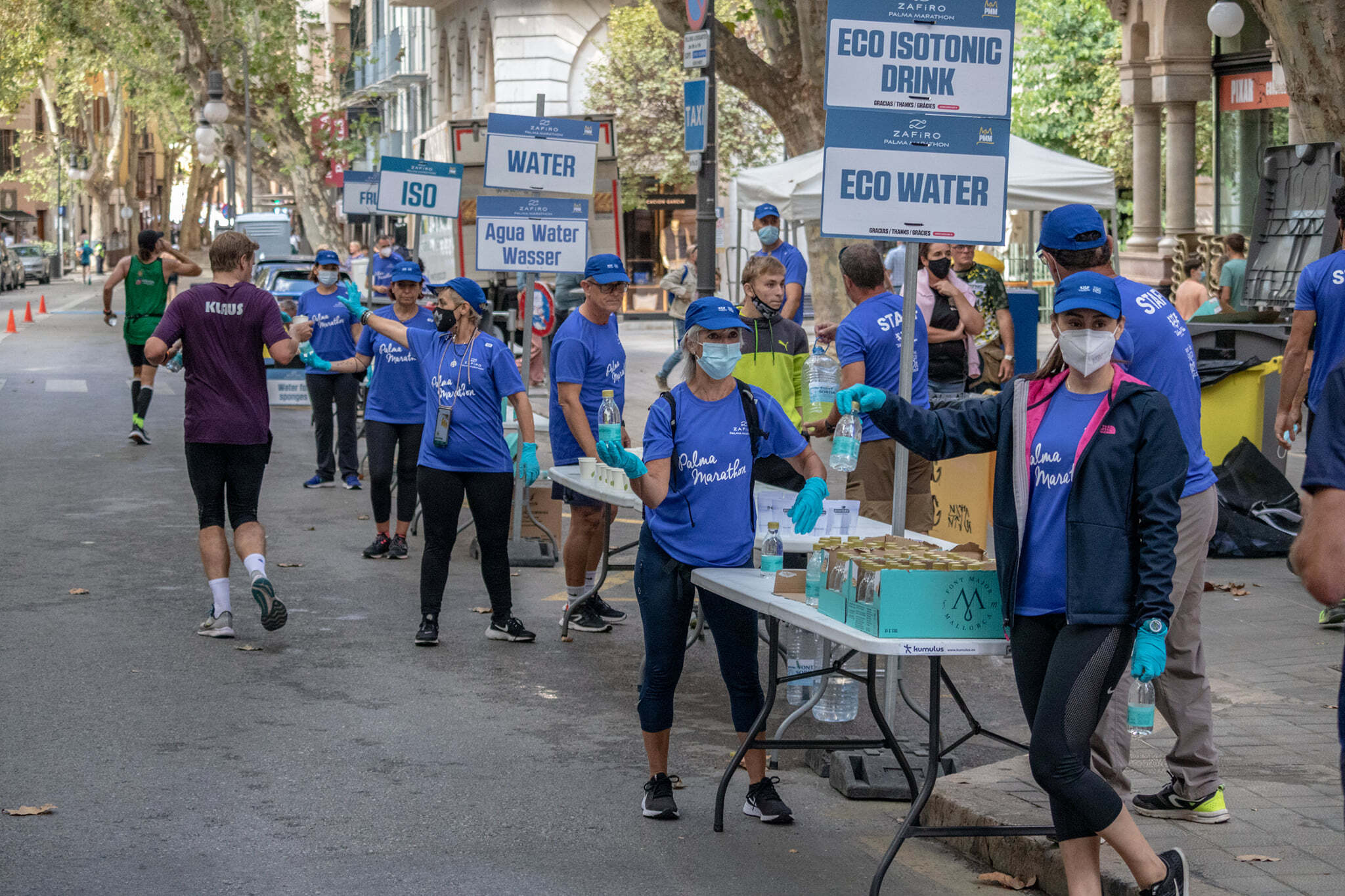
Dehydration, an enemy to fear
dehydration is one of the enemies that runners face in any long-term race from the second hour of competition. And he is not just any enemy, he is an enemy to be taken very seriously.
One of the main reasons for dropping out of endurance sports it comes hand in hand with inadequate or insufficient hydration or both.

It is common for dehydration to cause withdrawal from the marathon and trail races. running in which the 2-3 hours of competition are exceeded, however it is avoidable and many times it is produced by the athlete's mistakes.
First of all, it is remarkable that not only it is necessary to be properly hydrated at the time of the sports event, but in the athlete's day-to-day. It could be said, therefore, that incorrect hydration is one of the limiting factors for proper sports performance, post-training recovery, and prevention of complications during competition.
As already mentioned above, the main causes of dehydration are the sweating and urine (ie, situations in which fluid is expelled from the body). These situations vary according to weather factors such as temperature, humidity and wind.

Symptoms and consequences of dehydration
The first symptom dehydration in a competition can appear when the problem no longer has a solution; and this is so because it is possible that the athlete has previously overlooked symptoms to which he has not given adequate importance: thirst, less frequent urination, darker urine, Fatigue… As the degree of dehydration increases, these symptoms can be complicated by lack of energy, dizziness, confusion, altered heartbeat, nausea…
Some consecuencias dehydration are as follows:
- Cramps: Appearance of painful spasms in the muscular area of the abdomen and joints, caused by an incorrect sodium replacement. In other words, an adequate amount may have been drunk, but not correctly.
- Syncope: it is characterized by appearing in the first days of training in an environment with a higher temperature and humidity than usual. After a week the body acclimatizes to the new weather conditions.
- Exhaustion: appearance of gastrointestinal complications (nausea / vomiting / diarrhea), feeling of heat in the head and trunk, fatigue, hyperventilation. It usually involves the withdrawal of the test due to the inability to continue doing physical activity.
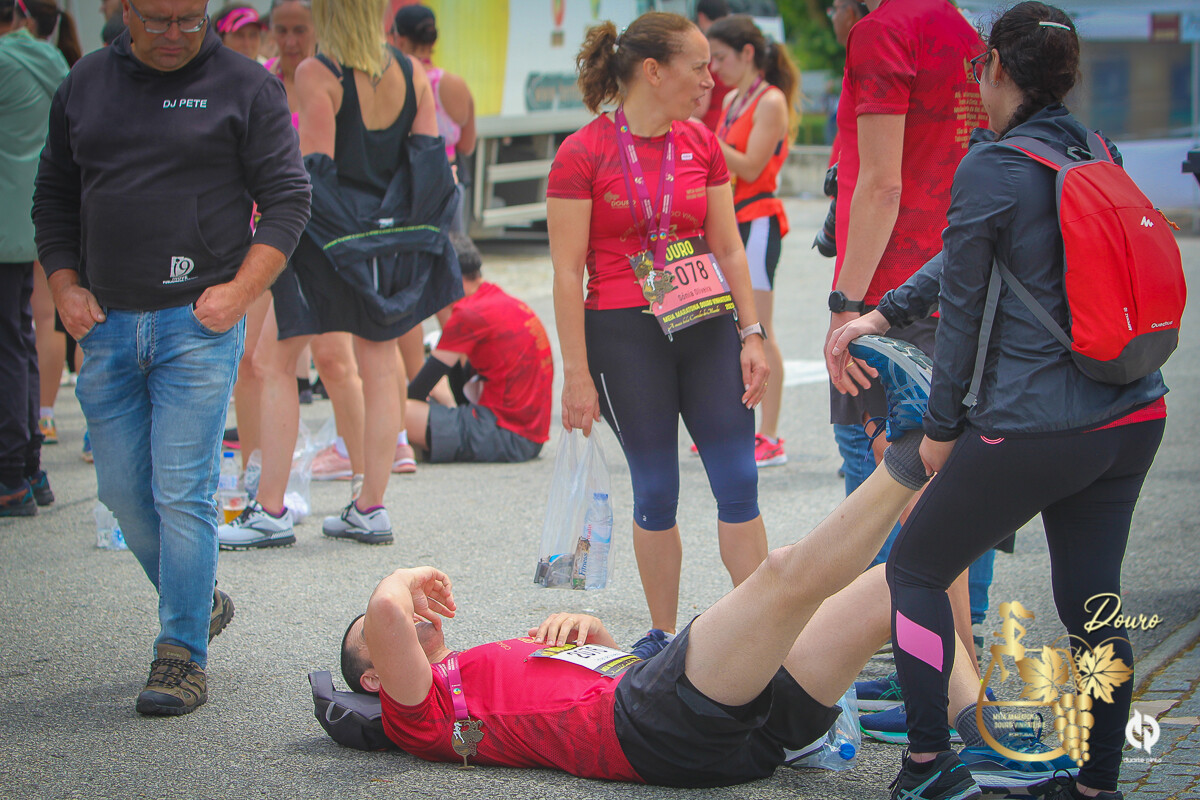
Hyponatremia, what is it and how is it produced?
La hyponatremia is one of the main complications in endurance and ultra-endurance athletes. An athlete suffers from hyponatremia when he presents a lower than normal blood sodium concentration. It is highly characteristic of tests lasting more than 6 hours, although it can also appear in periods of 2 to 4 hours of activity.
In this asymptomatic phenomenon and, therefore, difficult to detect, which in extreme cases can have serious consequences and even the death of the athlete. Luckily, such extreme cases are not usually reached and a good hydration strategy prevents its appearance.
The causes of hyponatremia They are basically these:
- excess body water: occurs due to excessive water intake or poor excretion.
- Decreased sodium in the blood: Produced by excessive sweating and poor replacement of said mineral.
In other words, there are times when, despite drinking a significant amount of water, you are not properly hydrated. And the problem is caused by a lack of sodium. It is not enough to replace the water to compensate the loss that is generated through sweat and urine, also it is very important to replenish sodium through salt capsules or rehydration drinks (water can be alternated with this type of drink).
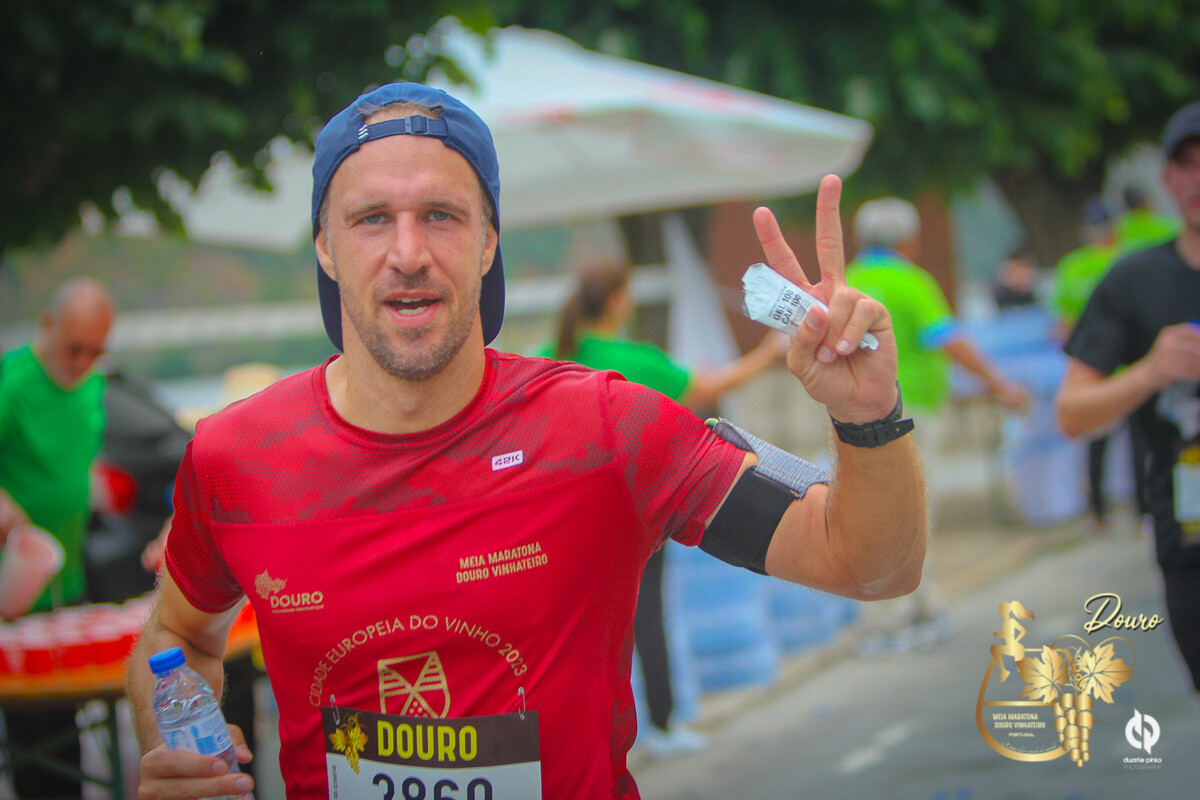
As a general recommendation, it could be indicated that adequate hydration would range from a consumption of between 500-700ml of liquid per hour, but we are going to try to personalize it a little more with a practical example of how to do it:
A runner wants to know how much he should hydrate during a marathon (starting at 9.00:15 a.m. with a temperature of about 3 degrees) and what he expects to do in 1 hours. A few weeks before the marathon, he should go out for a 9.00-hour run, at 75:60 a.m. with a temperature and pace similar to that of the day of the test. Just before going for a run, he weighs himself and records a weight of 74,2kg. During the hour of training he hydrates normally and after 0,5 minutes he comes home and weighs himself again, registering a weight of XNUMXkg; he looks at his bottle and sees that he has drunk half a liter of water (XNUMX kg).
Thus, in one hour the athlete has to replace 1,3kg of liquid for optimal performance. The equation is INITIAL WEIGHT – FINAL WEIGHT + INGESTED LIQUID.
Lastly, I would like to underline that nutritional planning in endurance/ultra-endurance events is complex, since multiple variables must be taken into account such as sodium and other mineral intake, carbohydrate intake per hour, fluid replacement, gastrointestinal problems, possibility of intake of alimeDrinks/liquids, supplies, type of sports, personal needs, sports equipment available to the patient, etc.
Therefore, on behalf of all registered dietitians-nutritionists, he wants to recommend to any runner who plans to face a long-distance race that they put themselves in the hands of professionals. Because from the hand of a specialist in sports nutrition you will know how to plan your hydration correctlylimentation facing your sporting goal without putting your health at risk.
Having a good body composition is essential to obtain or pursue optimal sports performance. For this reason, many athletes decide to lose weight to refine and improve their sensations in training and competitions.
However, when it is advisable to try lose weight? The answer is simple: or before or after facing the season of competition. Which It's not advisable is to face a weight loss strategy during competitive period because hardly any benefit will be obtained and, with complete certainty, sports performance will be affected.

So, dieting to try to lose weight in the middle of the season (and therefore competing and demanding maximum performance from the body) is a bad idea because it will not bring benefits and, nevertheless, it will bring harm.
Losing weight during the season penalizes performance
Depending on the type of sport that is practiced, one or another body composition will be needed. For example, in sports in which strength prevails, such as weightlifting, a more voluminous complexion and great power at the muscular level are needed. Instead, in endurance sports (how is he running, cycling, triathlon, etc.) and resistance using strength (such as football, martial arts, tennis, etc.) a thinner and lighter complexion is required.

That is, to run a test like the marathon, the lower the weight of the athlete, the less the sensation of "carrying a backpack" that is suffered during the 3-5 hours (in the case of popular runners) of the race. . It is indisputable that body weight affects performance in the running (or running, as some prefer to refer to running) more than in other endurance sports such as cycling or swimming.
Getting to the right or optimal weight can be very beneficial for any regular runner who has competitive goals like a half marathon or marathon or a long distance trail event. Because with the right weight or optimum it is possible to obtain a better performance and, therefore, increase rhythms and decrease times, but it is also very important because decreases the risk of injury at a muscular and joint level and the athlete will suffer less during the competition.
Knowing all the benefits of running with the right weight and not with a few extra kilos, it is not surprising that this improvement in body composition is sought (lower fat mass and increase muscle mass). But is it advisable to start a treatment to lose weight at any stage of the season? My answer is resounding: NO.
A diet to lose weight worsens sports performance
If a weight loss diet is carried out, it should be done outside of the competition season or when we are not assuming highly demanding training.
The reasons why it is not advisable to go on a diet to lose weight in the middle of the season are the following:
- First of all, trying to lose weight must be ruled out to avoid a decrease in sports performance. Let's use an analogy: if a car spends €50 of gasoline to make a trip but only €30 of fuel has been refueled, there comes a time when the car stops. The same thing happens to the athlete: if thelimentation gives you less energy than you need, after 2, 3 or 4 weeks, your performance will begin to suffer and you will finally suffer a "puncture" in your performance; and from that moment on there will be little that can be done because your body will no longer respond correctly to the demands of the effort.
- In addition, between one training session and another you need a significant supply of energy and nutrients, which probably will not be achieved with a low-calorie weight loss treatment. For this reason, the athlete will not arrive fully recovered at the next training session.
- During training sessions and competitions, a constant supply of energy is necessary to maintain performance. If this is not the case, the athlete gradually decreases performance.
Lose fat in the middle of the season
But is it possible to lose or lose fat in the middle of the season? Yes, but trying not to lose weight.
If you want to lose fat in the middle of the season, it is advisable to have a weight maintenance diet and a negative caloric balance (i.e. spend more kilocalories than those that are ingested) introducing walks of more than an hour daily in a state of postabsorptive fasting, that is, allowing a few 3 or more hours after ingestinglimein (The postabsorptive state is the metabolic state that occurs after digestion, when ingested food is no longer the body's source of energy and depends on stored glycogen).
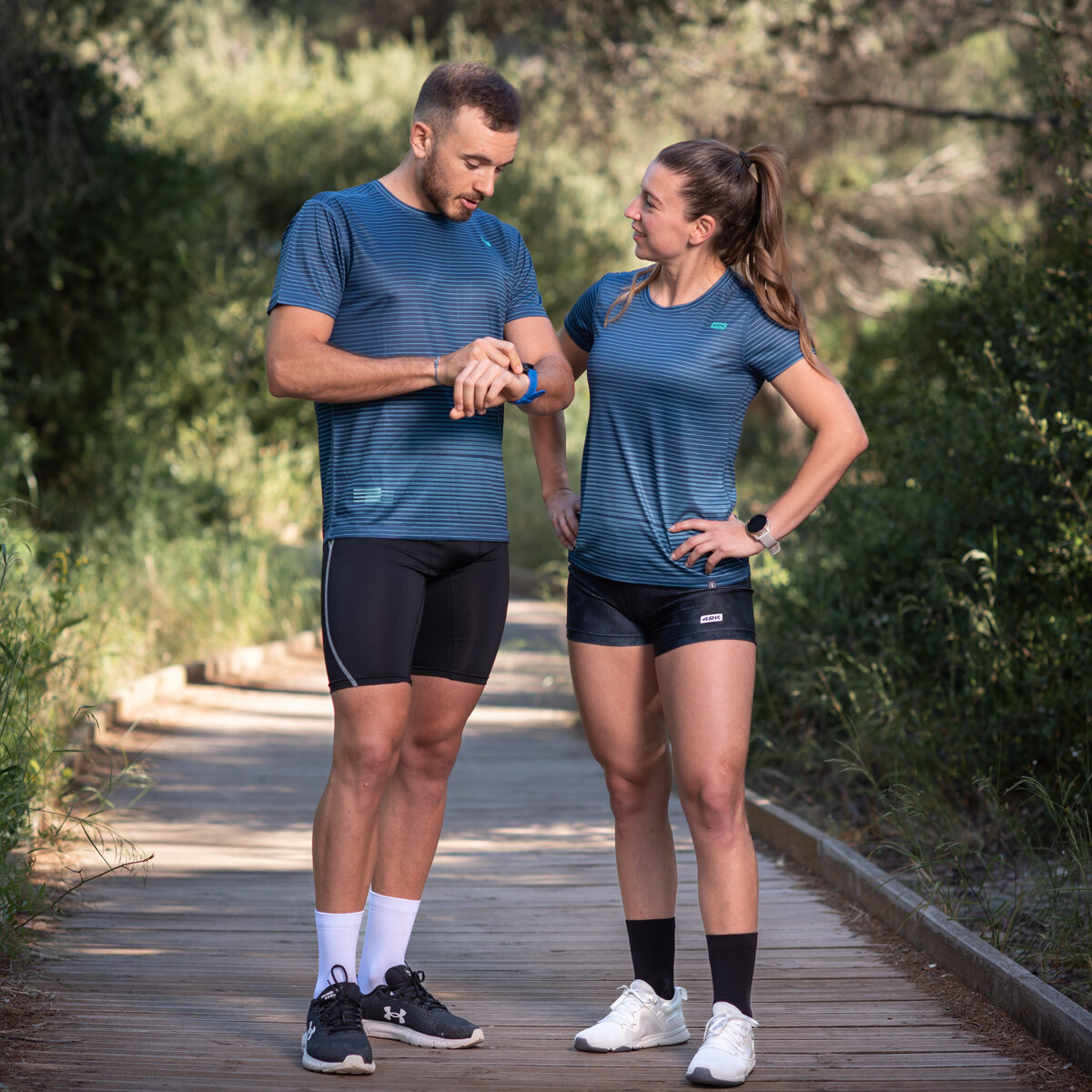
Therefore, and by way of summary, the ideal is to carry out a weight loss strategy during the pre-season or after the competitive period has finished, but it should be emphasized that it is not a good idea to lose weight in the middle of the season because the result will be disappointing.
Below you can see in the following infographic a schematic summary of what was explained above.
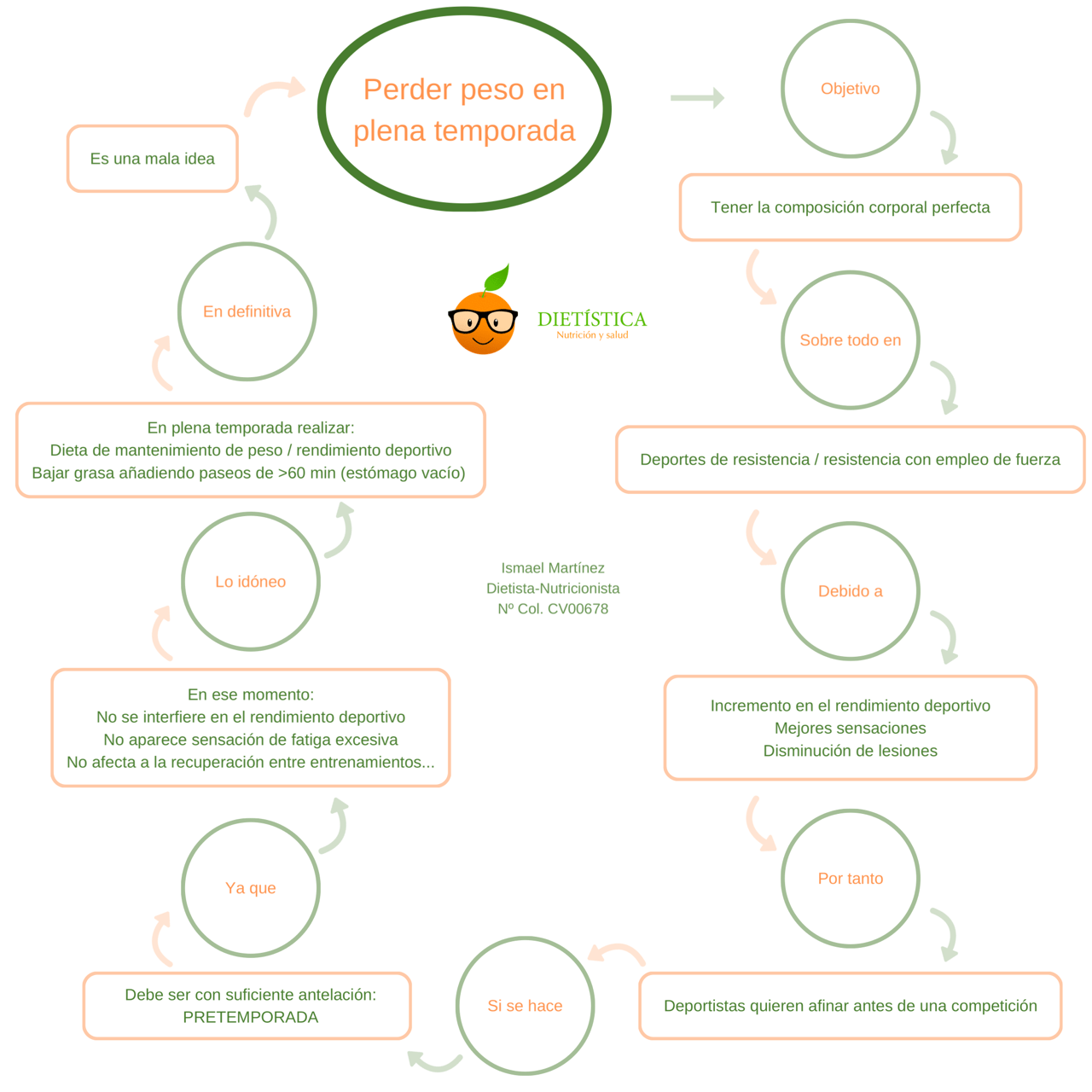
One of the questions that friends who run have asked me many times is what eat before a race. In this article I am going to indicate a series of nutritional recommendations before facing a competition running.
What to drink and eat before a race?
It is very important to ingest alimesuitable nts in the hours before a competition to obtain a optimal sports performance y avoid possible discomfort that prevent you from competing at the best level during the race.
It is necessary to emphasize that the sports season has several phases (rest, preparation, competition and post-competition) and therefore thelimentation will not be the same at different times of the season.
It is also important when talking about what to eat before a race to differentiate between the needs of highly trained people (regular or elite athletes) and people who run for fun or leisure (popular runners and runners), since the energy pathways used during physical activity will not be the same. Obviously, any elite athlete knows what to eat before a race, but among popular runners it is common to find great ignorance.
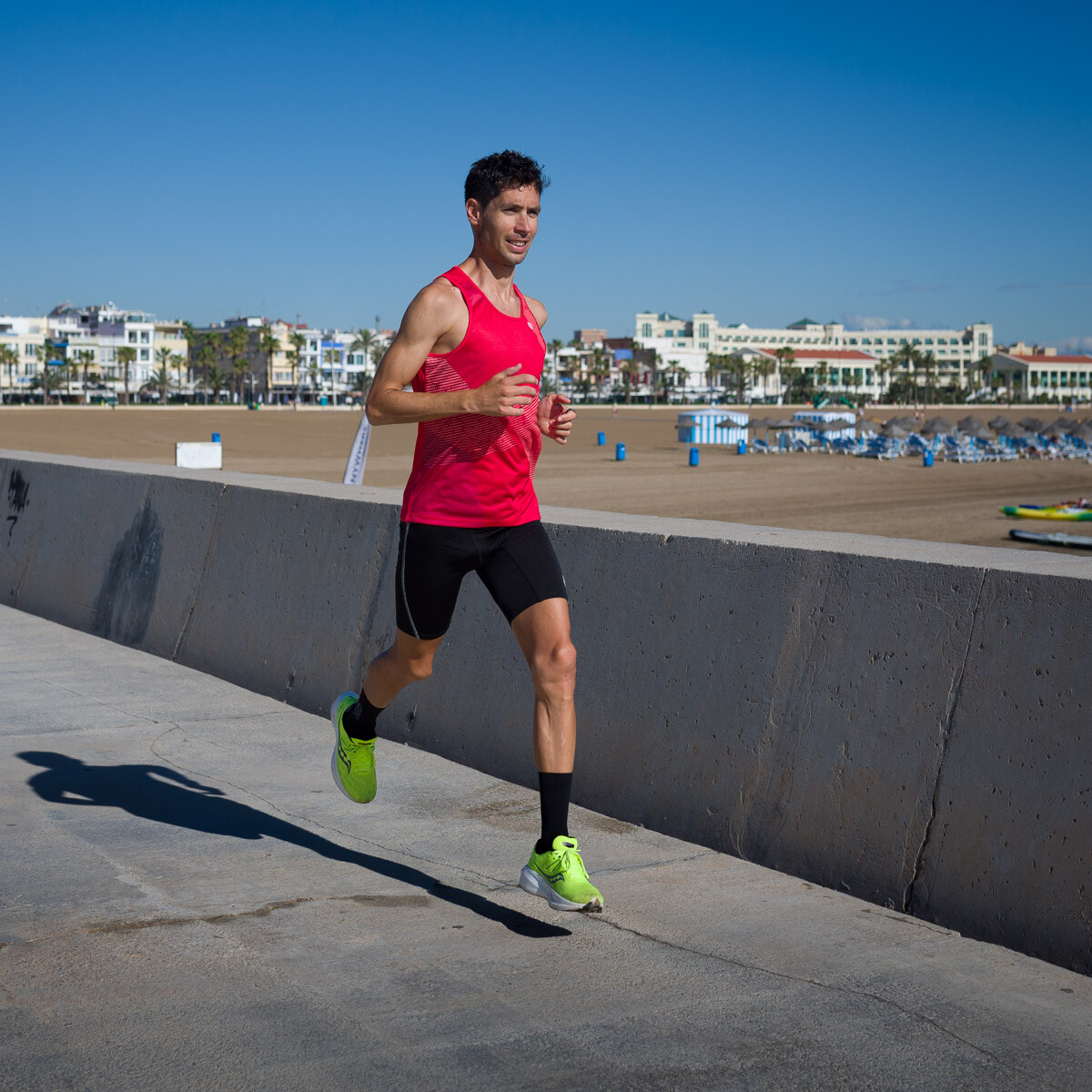
While the highly trained runner uses intramuscular fatty acid oxidation and is much less dependent on muscle glycogen (glucose store), the less trained athlete consumes a greater amount of carbohydrates (glucose) and a lower proportion of fatty acids. This supposes a lower sports performance in the case of the less trained athlete, because glycogen is very limited, while fatty acids can be used for a longer time.
Nutritional recommendations to face a competition
But what, when and how should we eat before a race? We are going to see the what, when and how of what to eat and drink before facing a demanding physical activity.
– About 3 hours before physical activity
3 hours before facing the test, a intake rich in alimefoods rich in carbohydrates (since glucose shortage is directly related to fatigue and decreased sports performance) and to a lesser extentlimented with protein, fiber and fat.
If we have the competition in the morning, my breakfast proposals would be the following:
- Milk or vegetable drink with cereals.
- Milk or vegetable drink with toast with honey.
- Milk or vegetable drink with oats.
If we have the competition in the afternoon, my lunch/meal proposal would be the following:
- pasta or rice (always white) with a small amount of vegetables and a little bit of tuna.

Why pasta or white rice? Well, because its digestion is much faster and therefore the assimilation of its nutrients is also much faster. Furthermore, to ensure correct and rapid assimilation, both pasta and rice must be well cooked and not "al dente" because it will be much more difficult to digest.
– Between 30 and 60 minutes before physical activity
The protocol at this time will start with 2-3 glasses of water about 15-20 minutes before making this intake to avoid slowing down digestion.
between the tolimeIn the absence of approximately 1 hour before the start of the test, it is necessary to include aliments of easy digestion as bread with honey, quince or jam; Skimmed yoghurts, non-whole grain cereals, low-fat biscuits, non-whole muesli, fruit or dried fruit.
All of this can be replaced by a few 300-500ml of isotonic drink rehydration sugar.
– Between 5 and 10 minutes before the start of the test
Ingest isotonic drink sugary orlimeFoods in small quantities that are very easy to digest, such as dried fruits. In case you do not consume isotonic drinks at the moment, take 2-3 glasses of water.
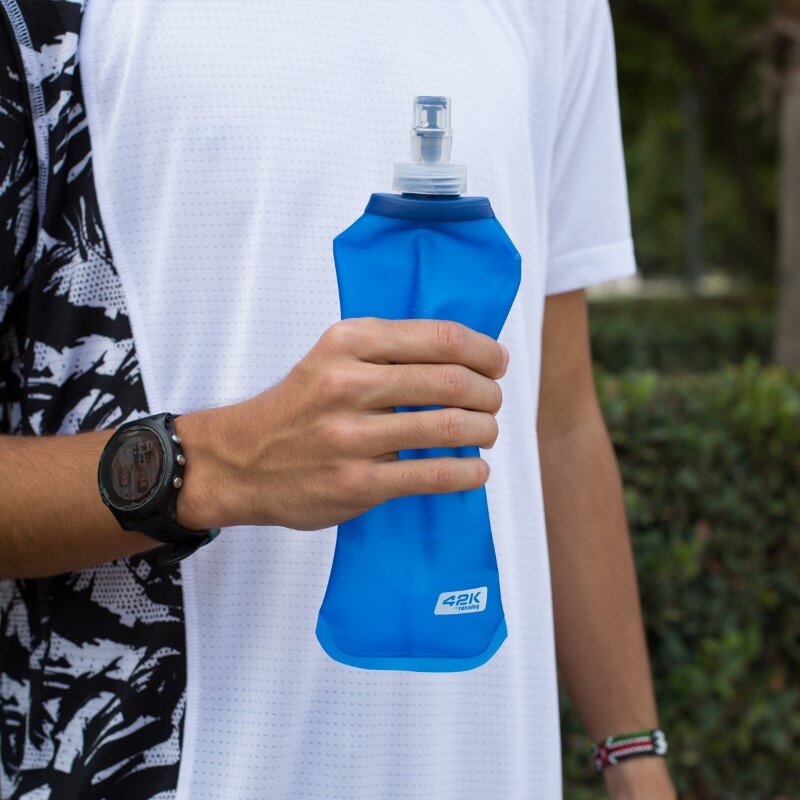
Everything must be trained before the race: also food and drink
A very important warning is that everything you eat or drink before the race must have been tried several times previously on training days. On the day of the competition you do not have to do experiments: no need to trylimeFoods or drinks that we have not tried before and we are sure that they feel good to us.
It is recommended try everything in training first and adapt these guidelines to our protocol. I give an example: the isotonic drink 5 minutes before the start may not feel good, but a handful of raisins and dried apricots do; Or that an hour before you don't feel like a jam sandwich but you do feel like some non-integral cookies. It is very important that each athlete knows himself as well as possible and knows with certainty what tolimeFood and drinks work for you and feel good.
None of the advice or recommendations on what to eat before a race that appear in this article (or in that of any other nutrition specialist) should be put into practice on the day of the race as it is possible for discomfort, allergies, intolerances, hypoglycemia...
I insist again that it is vitally important do not introduce changes or do tests on our a guidelineslimentation the day of competition because we can ruin the preparation of many months for a foolish thing. Not only do you have to train resistance, strength or elasticity, but also you have to train thelimentation and hydration, especially when we face tests that will require a prolonged and constant effort of more than 60 or 90 minutes.
Of course, you don't have to worry as much about what to eat before a 5K race as what to eat before a half marathon or a marathon. My advice to those runners who intend to prepare for a competition such as the half marathon or the marathon is to see a sports nutritionist for advice and guidance on the correctlimentation that they must incorporate into their planning for the sporting objective.
Enjoy of running and completing training (if you have sports goals that require it) in summer may seem difficult, but it can be done. Running in summer without problems is possible as long as we apply good sense and take some precautions.
We have already lost count of the very hot days (heat waves occur more and more frequently) that we have been suffering this summer and those of us who live in coastal areas (in Valencia, as is my case), in addition, we have to dealing with the humidity, which still makes everything a little more difficult when it comes to running.
In this article I am going to offer you a series of tips or recommendations on how to train in summer. Many runners in Spain, especially those with sports goals in the second half of the year (Berlin marathon, Lisbon marathon, Majorca marathon, the Porto marathon, the New York marathon, the Athens marathon or the Valencia marathon, among other major events that are usually attended by many Spaniards) have to run in the summer to continue planning their training sessions.
Running in summer: recommendations for optimal and safe performance
Summer is a time of the year in which many runners take the opportunity to take their training to the aire free, enjoy the sun and good weather (as long as the thermometer does not go off and the supposed good weather turns into a curse). Running in the summer airBeing free in the countryside, the beach, the mountains or the parks of any city is a satisfaction that sometimes we cannot afford in winter and we try to take advantage of during the summer months or on vacation.
The high temperatures and Sun exposure can present additional challenges to run in summer. To ensure optimum performance and stay safe during the hottest months it is essential to make certain adjustments in training and take certain precautions.
Below we are going to see a series of recommendations to avoid possible risks and dangers (dehydration, burns, heat stroke, poor performance...), to continue enjoying the running and summer training.
Follow these 10 tips for running in summer
1. Choose the hours well: early in the morning or late in the afternoon.
Avoid doing workouts in the hottest hours of the day, usually between 10:00 a.m. and 18:00 p.m.; In some parts of Spain, especially in mountainous or high altitude areas, it is possible to train before 18:18 p.m., but in coastal areas, and especially on hot and/or humid days, it is better to wait for the temperature to drop after 19:XNUMX p.m. XNUMXh or XNUMXh.

Opt to train early in the morning or late afternoon, when temperatures are cooler and there is less exposure to the sun (and also solar radiation is less harmful).
2. Hydrate.
Proper hydration is essential to run in summer without exposing yourself to unnecessary risks.
There are people who do not give due importance to hydration and it is a huge mistake. If you go running in summer, do it always, always, with agua. There can be no excuses with this issue because it is much easier than it seems to suffer from dehydration (intense heat + insufficient fluid intake = dehydration). In addition, we must bear in mind that even if we do not feel thirsty, we must drink regularly to avoid scares, since sometimes you may not feel thirsty and be at risk of dehydration.
Include in your day to day a greater contribution of mineral salts during the summer as heat and sweat can lead to rapid dehydration. Be sure to drink sufficient water before, during and after of your training sessions (I want to underline the "before" and also the "after", because hydration is not important only during physical exercise).

When you go out to train take a bottle of water with you and, in case of doing a long run or training in the mountains, plan your routes to pass by sources or places where you can refill your bottle.
consider bringing isotonic drinks to replenish lost electrolytes, especially if you plan to train for a longer duration.
2. Equip yourself appropriately: light clothing and a hat.
Running in summer with the right clothes is something that seems obvious, but on more than one occasion I have seen people running in the middle of summer in long leggings, sweatpants, cotton t-shirts that do not allow perspiration...
Choose breathable and light-colored sportswear which helps you stay cool and quickly dries sweat. It may seem silly but light colors will help you feel less hot during your workouts. There are studies that state that there can be a difference of between 8º and 10º between light and dark clothing; light clothing is usually around 35º during the practice of running, while dark colored clothing can reach 43º.
In addition, I also consider it important to wear caps (highly recommended to reduce head temperature), visors and, of course, sunglasses to protect your eyes from UV rays.
3. Wear sunglasses.
La use of sunglasses It is of great importance for running in summer. Unless you train in hours of low light, the use of sunglasses is highly recommended. In addition to protecting your eyes from ultraviolet rays, they will also protect them from eye fatigue, dryness due to loss of moisture and unforeseen dangers that can cause discomfort or injury to your eyes: insects, sand, tree branches, stones fired by a vehicle...

En 42K They have different models of sports glasses designed exclusively for running that you can know in your Online store.
4. Protect yourself from the sun.
It is important to protect yourself from ultraviolet radiation (UV) throughout the year, but in summer it is especially important because the level of intensity of ultraviolet radiation is higher (even on cloudy days you have to take precautions). The sun's ultraviolet rays are strongest between 10 a.m. and 4 p.m., so avoid exposure to the sun without adequate sun protection during that time slot.
I'm not going to lie to you: putting on sunscreen is not something I am excited about, but I consider it essential and non-negotiable. Skin protection must be taken very seriously and there is no other choice but to use a good sun cream to prevent something as serious as skin cancer.
Don't skimp on sunscreen for summer runs and, if you can, use one sunscreen special for sports use that is Waterproof and sweat; apply a generous amount to all exposed areas of the skin (don't forget the ears and lips, although for lips you can use specific products so they do not dry out) before going for a run and reapply every two hours, especially if you sweat a lot .

La OCU indicates that, as a minimum, it is necessary to use protective creams with a protection index 15 (SPF 15), but recommends, like all the experts, to use sun creams with a higher protection index. To stay calm and know that we will be adequately protected, it is convenient to use cream with a sun protection factor (SPF) from 30 to 50 (high protection) in the case of clear skins y sun protection factor +50 (very high protection) in the case of very light or kids skin.
The cream should not be put on when going for a run; you have to apply it 30 minutes before sun exposure, so that sunscreens are absorbed by the deepest layers of the skin and thus fulfill their role of protection.
Proper sun protection helps prevent burns and reduces the risk of skin cancer. Skin cancer cases have increased alarmingly in recent decades. According to 2022 data from the World Health Organization, each year there are between 2 and 3 million new cases of skin cancer.
5. Warm up and stretch.
Since the heat can cause the muscles to be more tense, it is highly recommended to perform a good proper warm up before running.
Performs joint movements y dynamic stretches soft to prepare your body. After your workout, when 8-10 hours have passed, take time to stretch again to improve flexibility and reduce risk of injury, and don't forget to hydrate. I insist once again on the importance of hydration, especially in summer, also when you are not training.
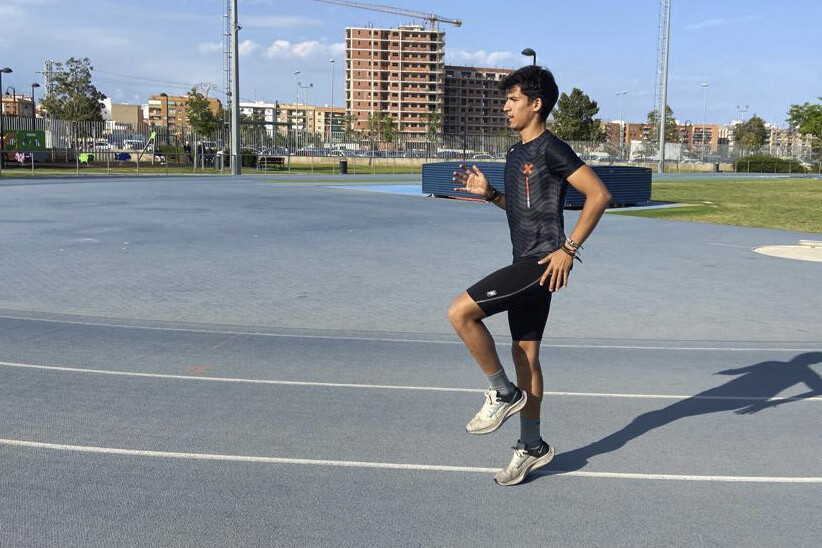
6. Progressive adaptation.
If high temperatures are new to you, use common sense and allow your body to gradually adjust to the heat. Start with shorter workouts and lower intensities and as you feel more comfortable, increase the duration and intensity of your sessions.
Listen to your body. Pay attention to the signals your body is sending you during training. If you feel dizzy, nauseated, or experience cramping, stop the activity and find a cool place to recover.
7. Plan your routes.
Route planning is especially recommended in case we plan to go for a run in the mountains or countryside. Choose routes that have shade and that they are well ventilated. Parks or trails in wooded areas can be ideal options for running in the summer.
If you plan to go out on a mountain route, calculate very well the time it can take to complete it to have enough water.
8. Train with company.
Running in the summer in a group is more fun to forget about the heat. In addition, training with a company can be safer and more motivating during hot days since, in case of an emergency, you will always have help nearby.
9. Slow down.
Slow down your training paces and try to train by pulsations to have control at all times of how the heat affects your body.
In summer the temperature of the airand causes body temperature to rise. When the body temperature is higher the heart is forced to beat faster in order to pump harder and send more blood through the skin (which means less blood to the muscles, which increases the heart rate). ).
The heat can affect your performance, since in summer the heart rate rises quite a bit, so don't worry about your pace. Listen to your body and accept that during the summer it is normal for your speed to be a little lower. In summer, less is more.
10. Post-workout cold shower.
At the end of your session, take a shower with cold water to lower body temperature and help muscle recovery.
And here are my 10 tips for running in summer without problems. I want to remember that each person is different, so it is important to adjust these recommendations to your needs and physical conditions.
In summer we must listen to the body more than ever to be able to enjoy the running in a safe and healthy way.
With adequate training and the necessary precautions, you will be able to maintain your level of physical fitness, enjoy the aire free and make the most of the summer.
Don't stop running in summer, but do it with your head.
Happy kilometers of running in summer!
42K · All rights reserved
